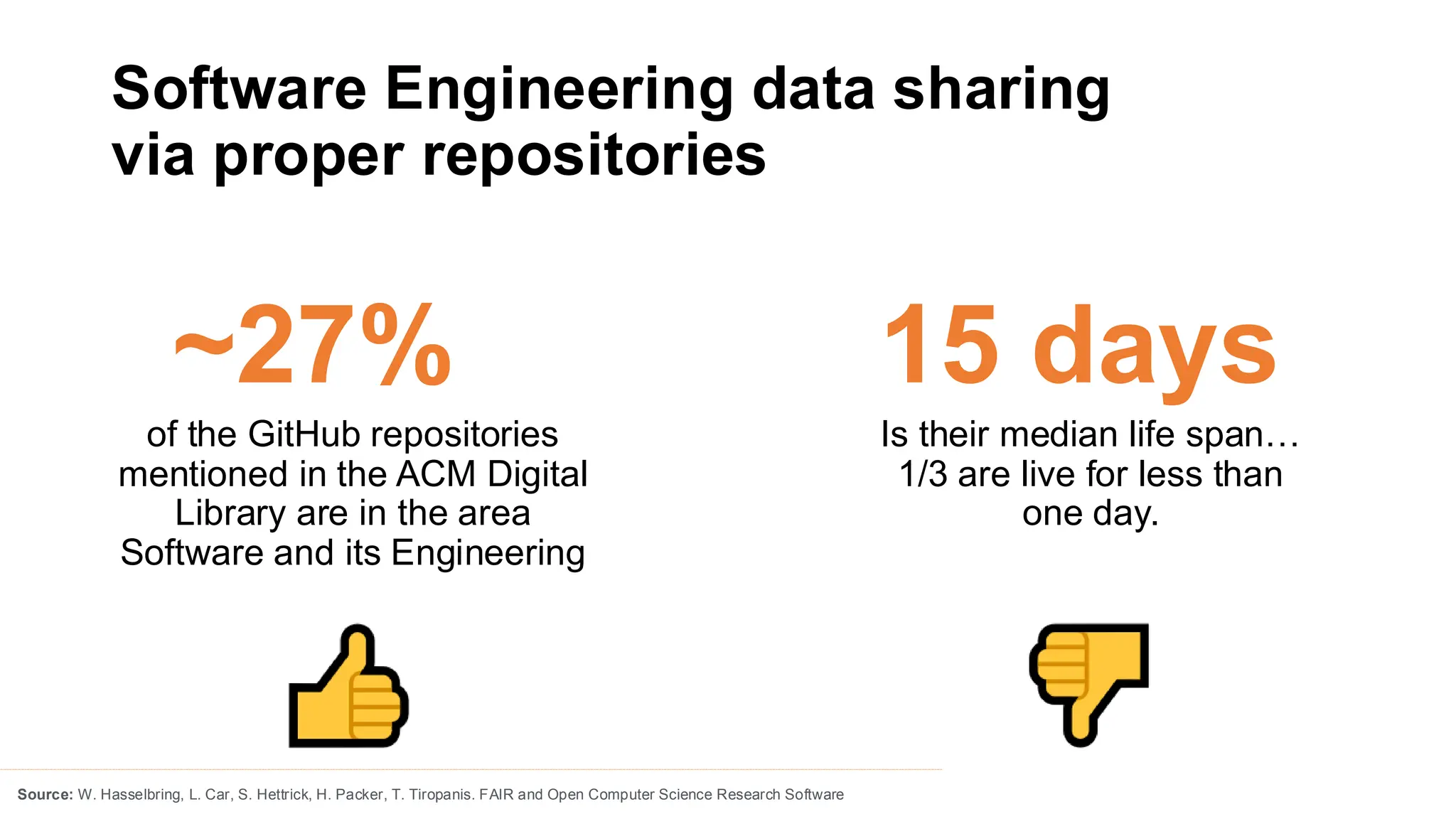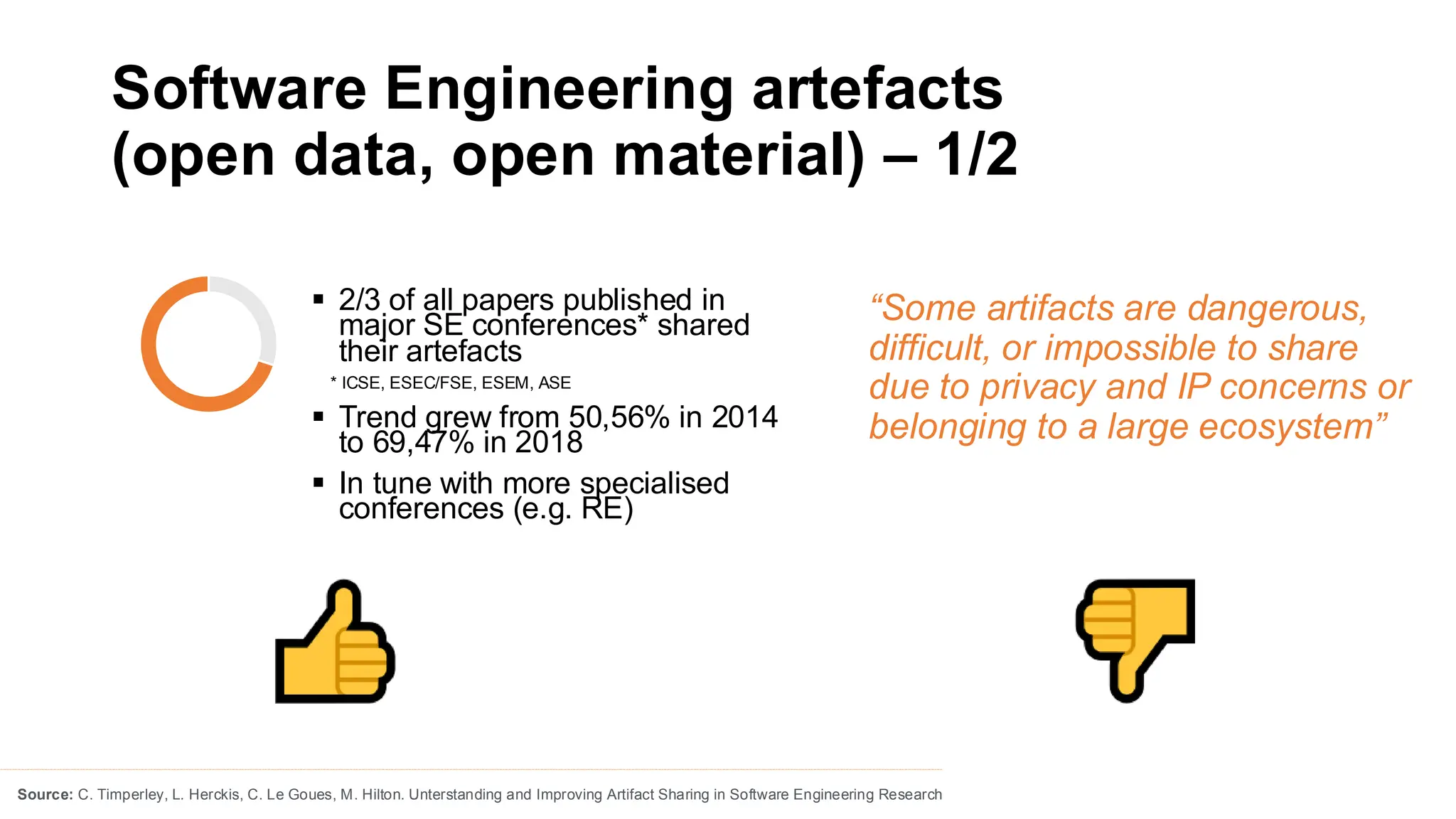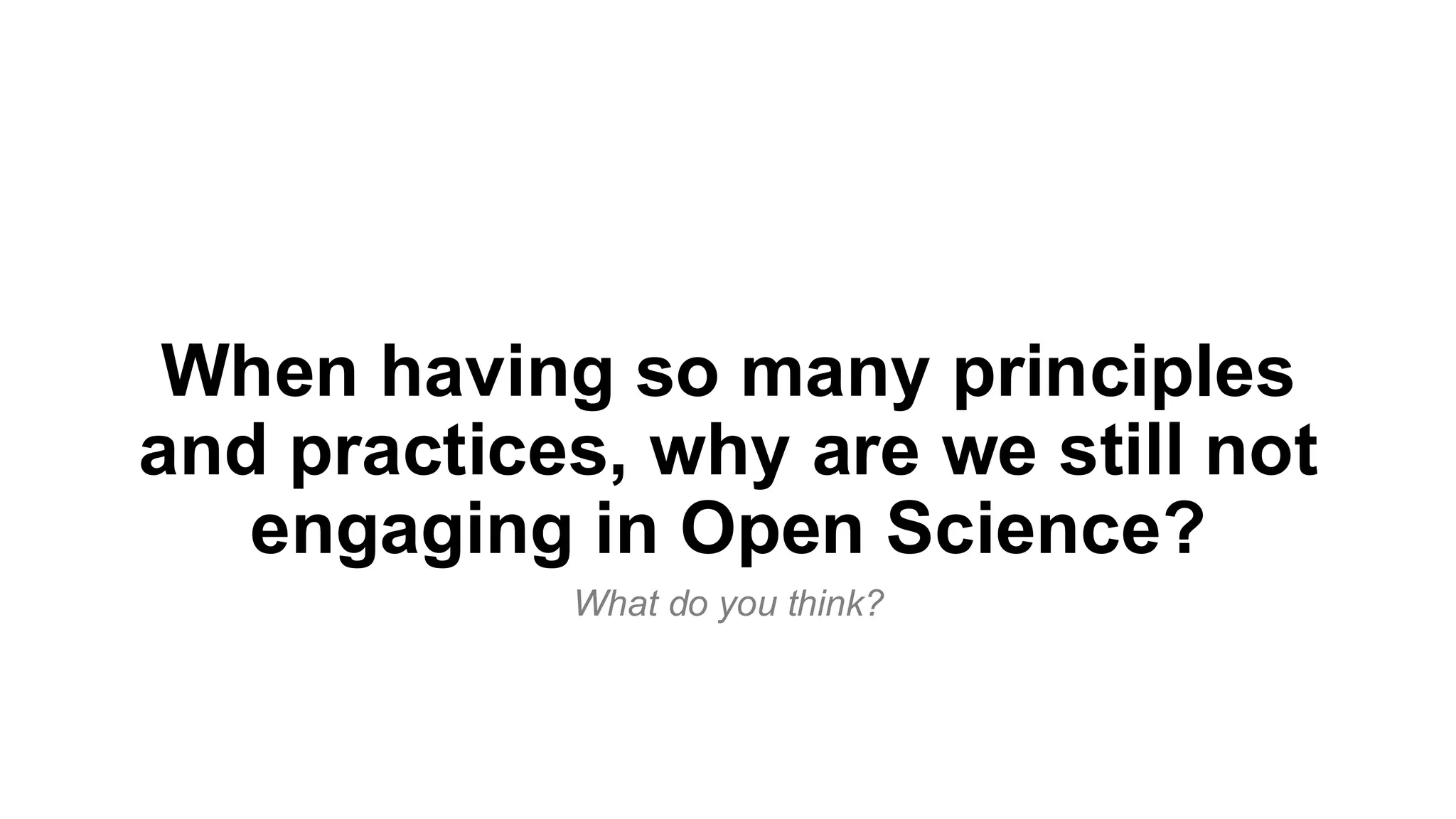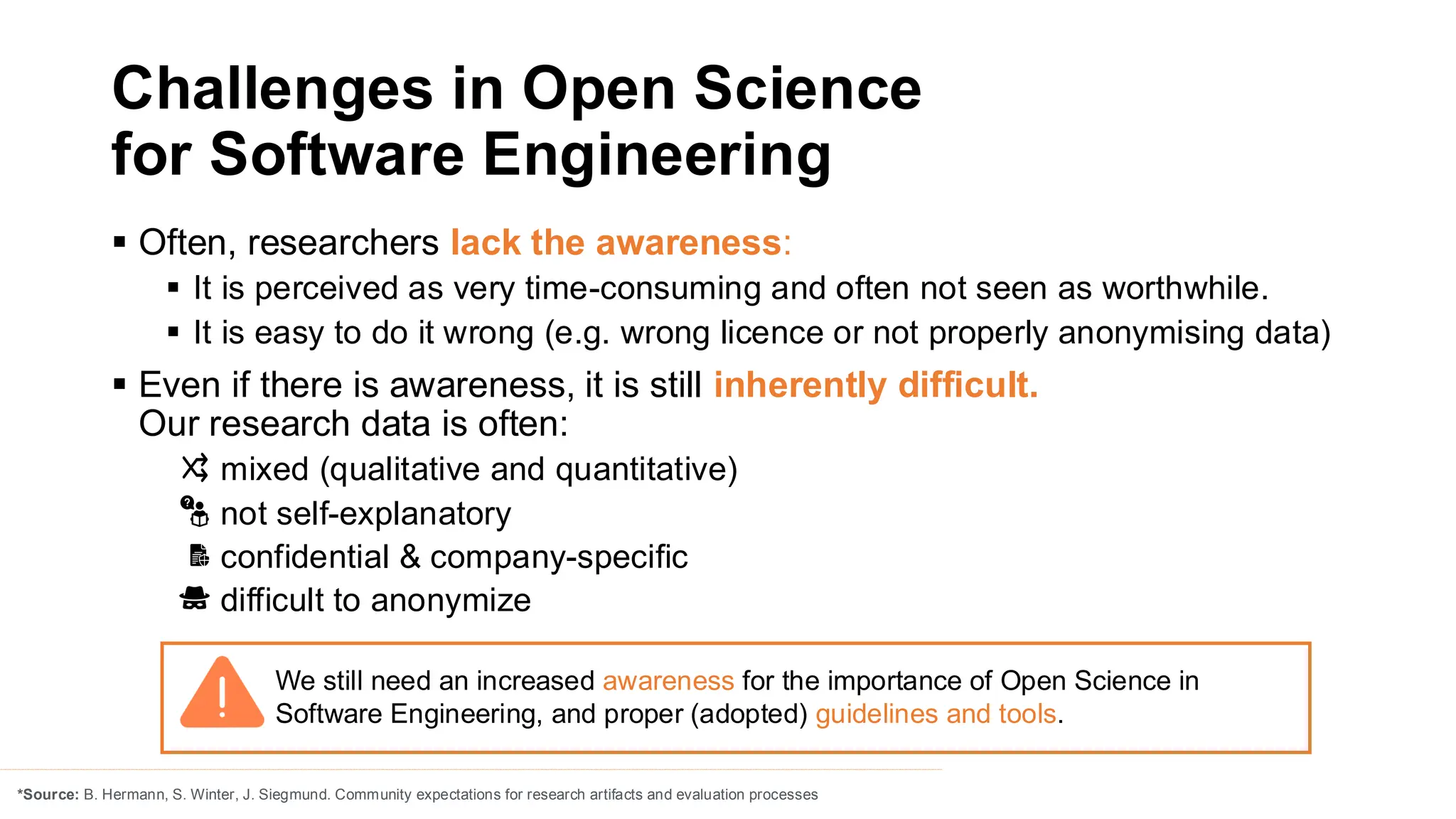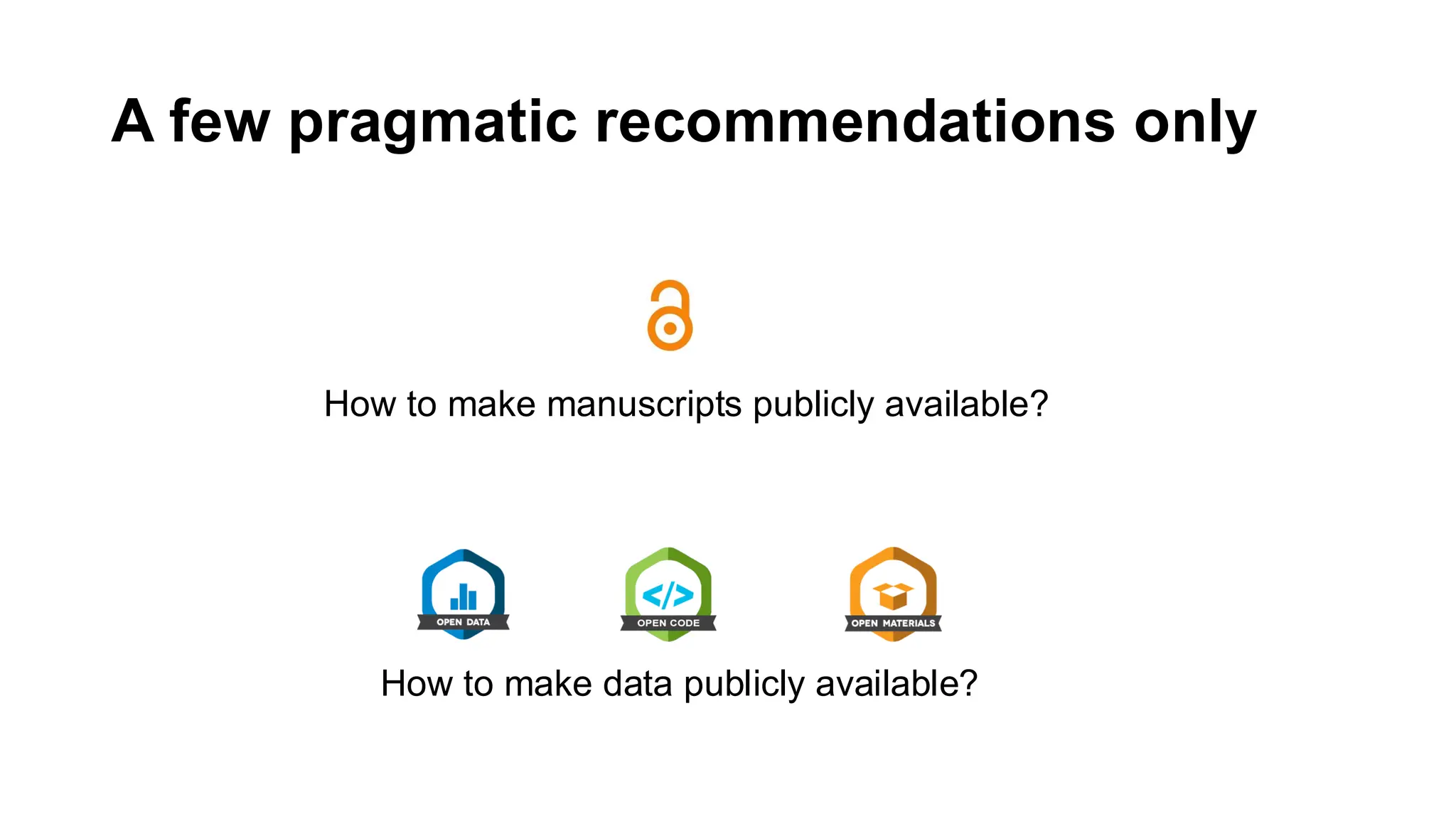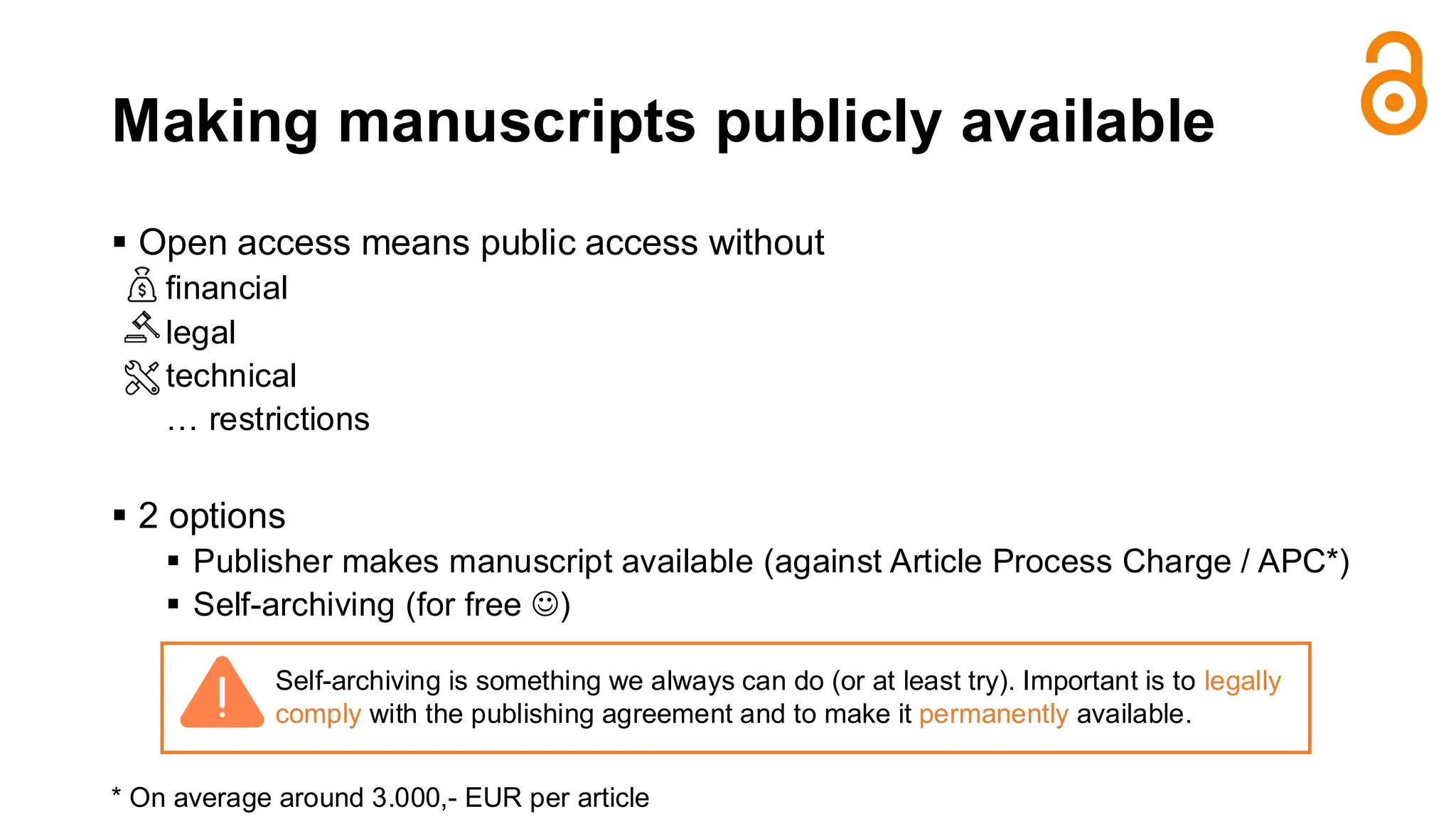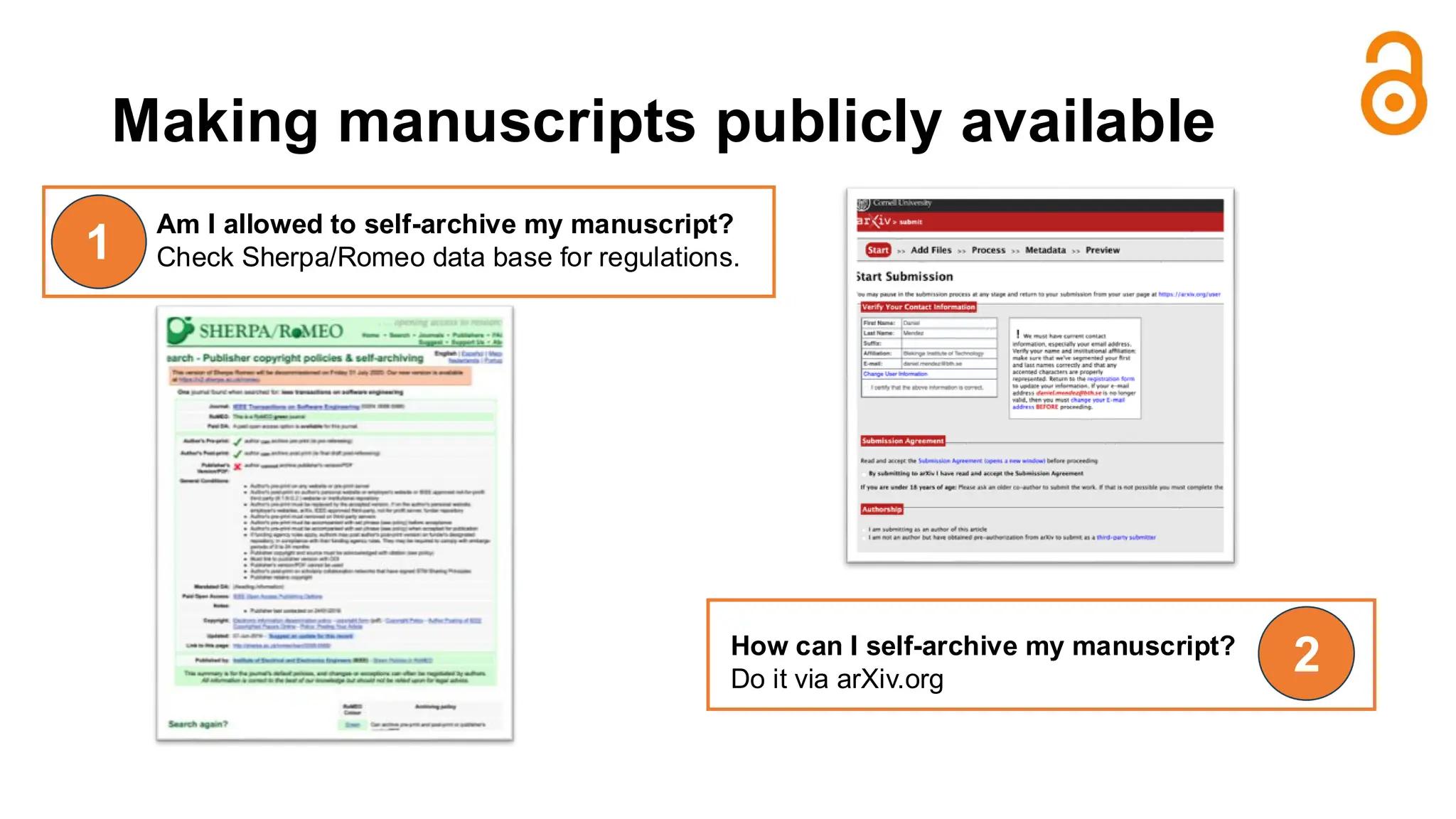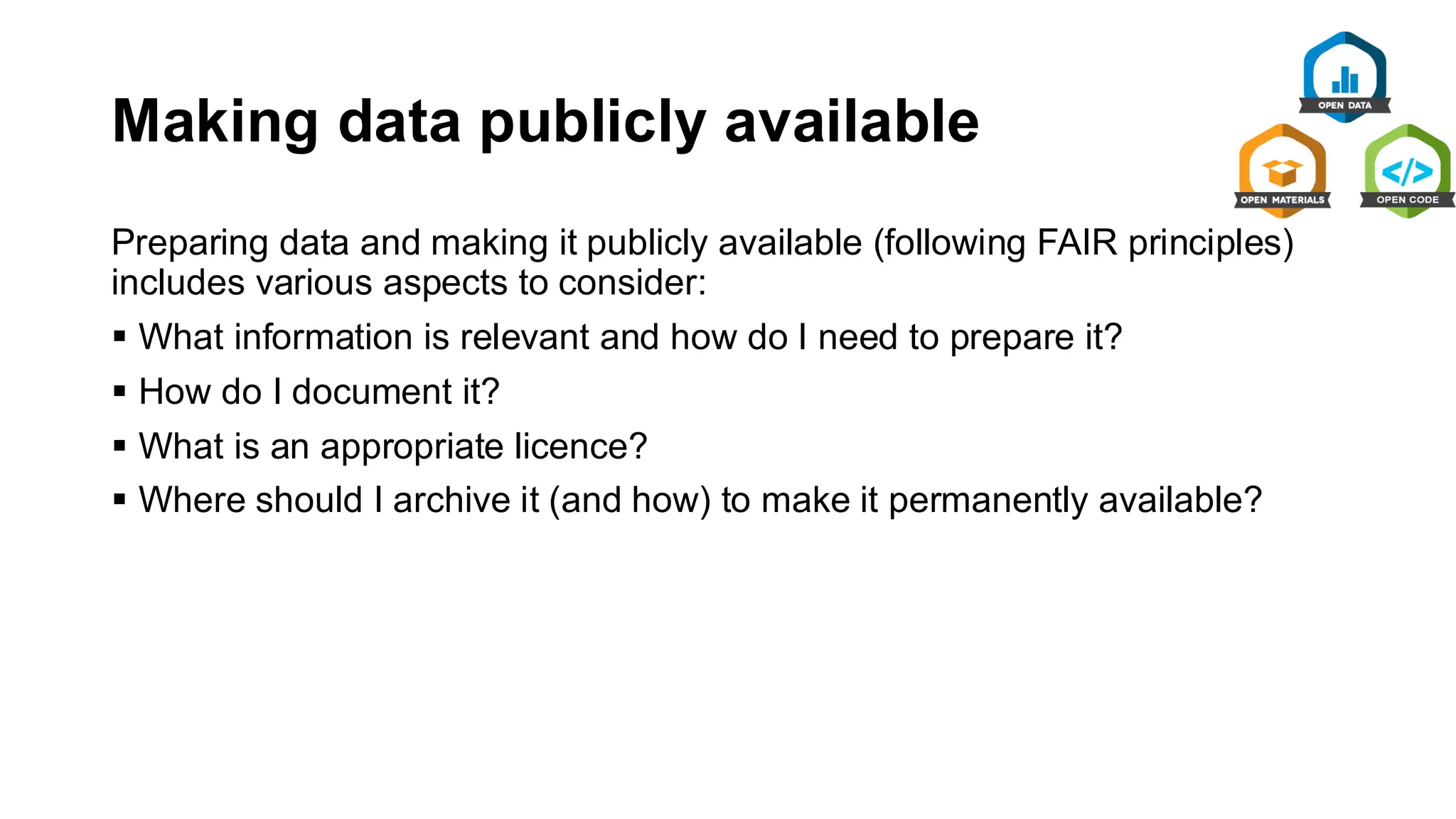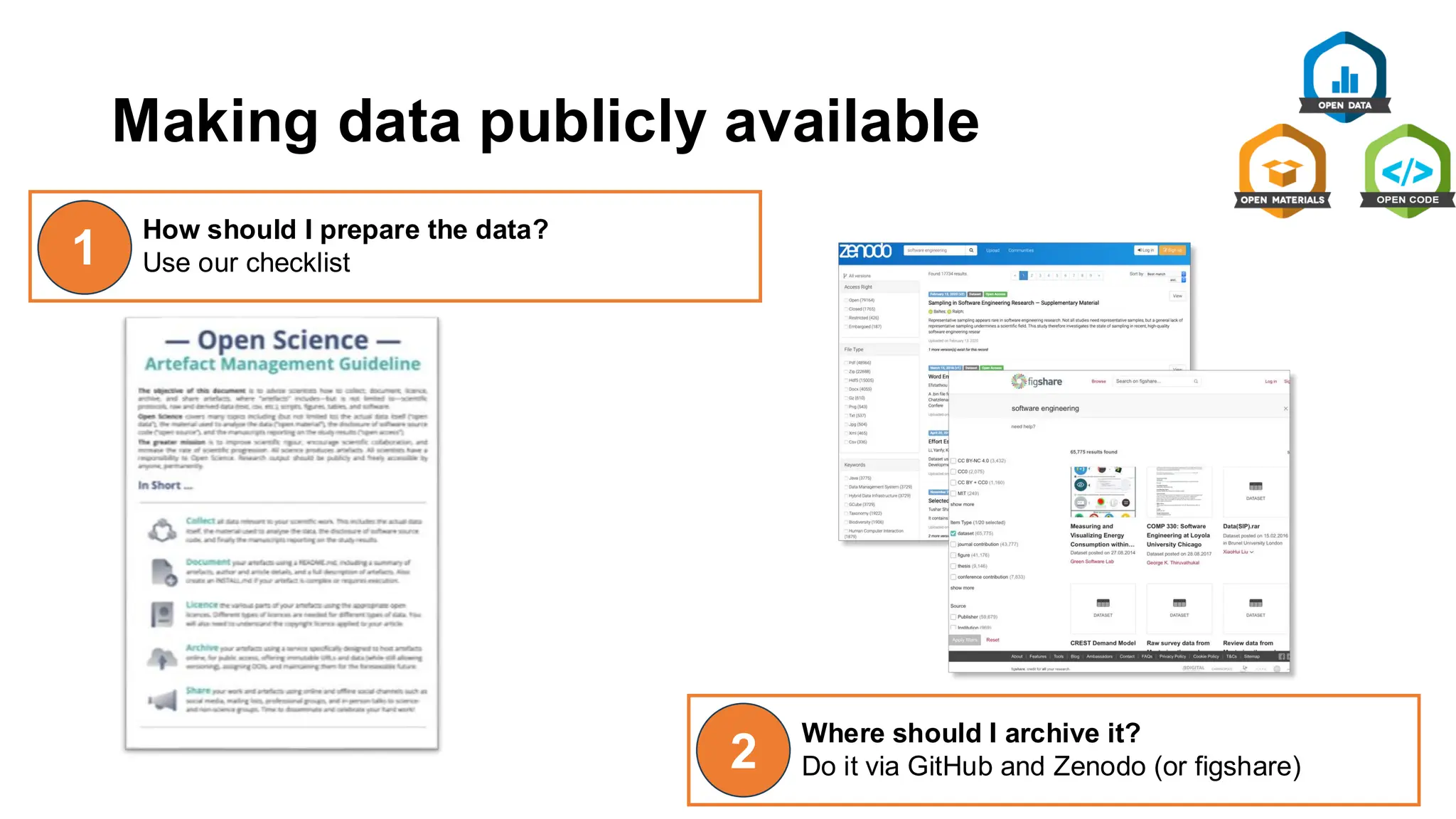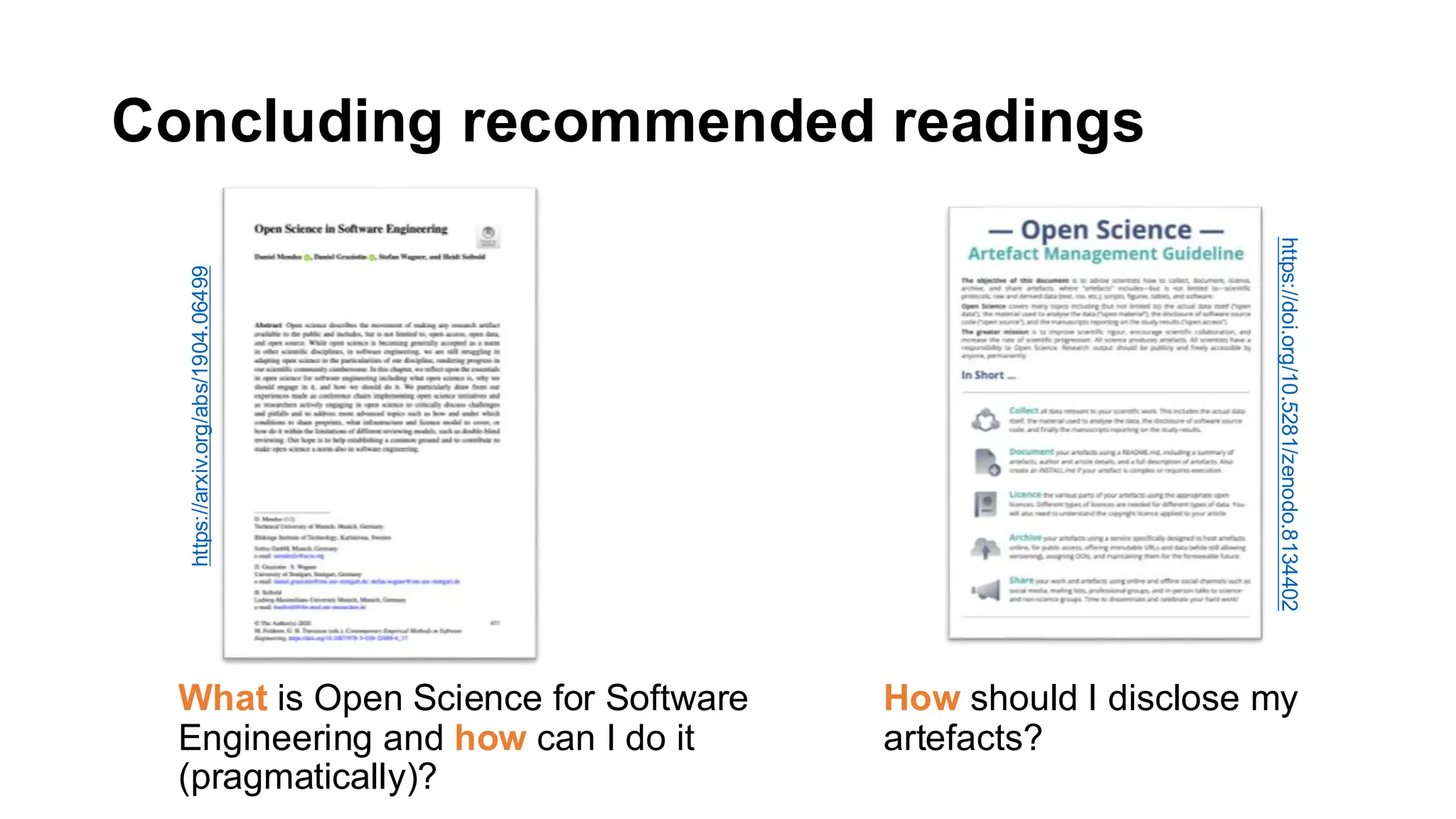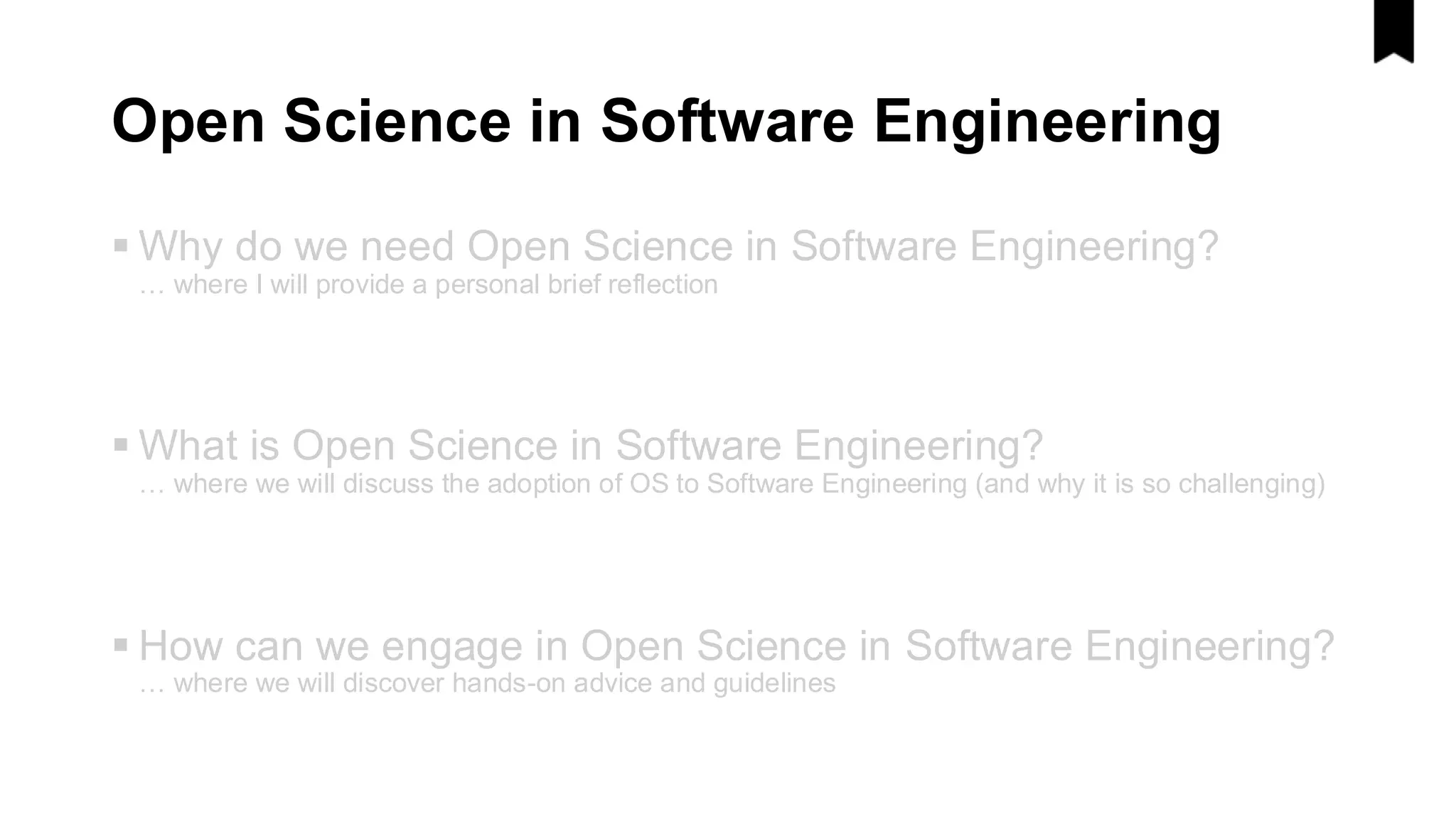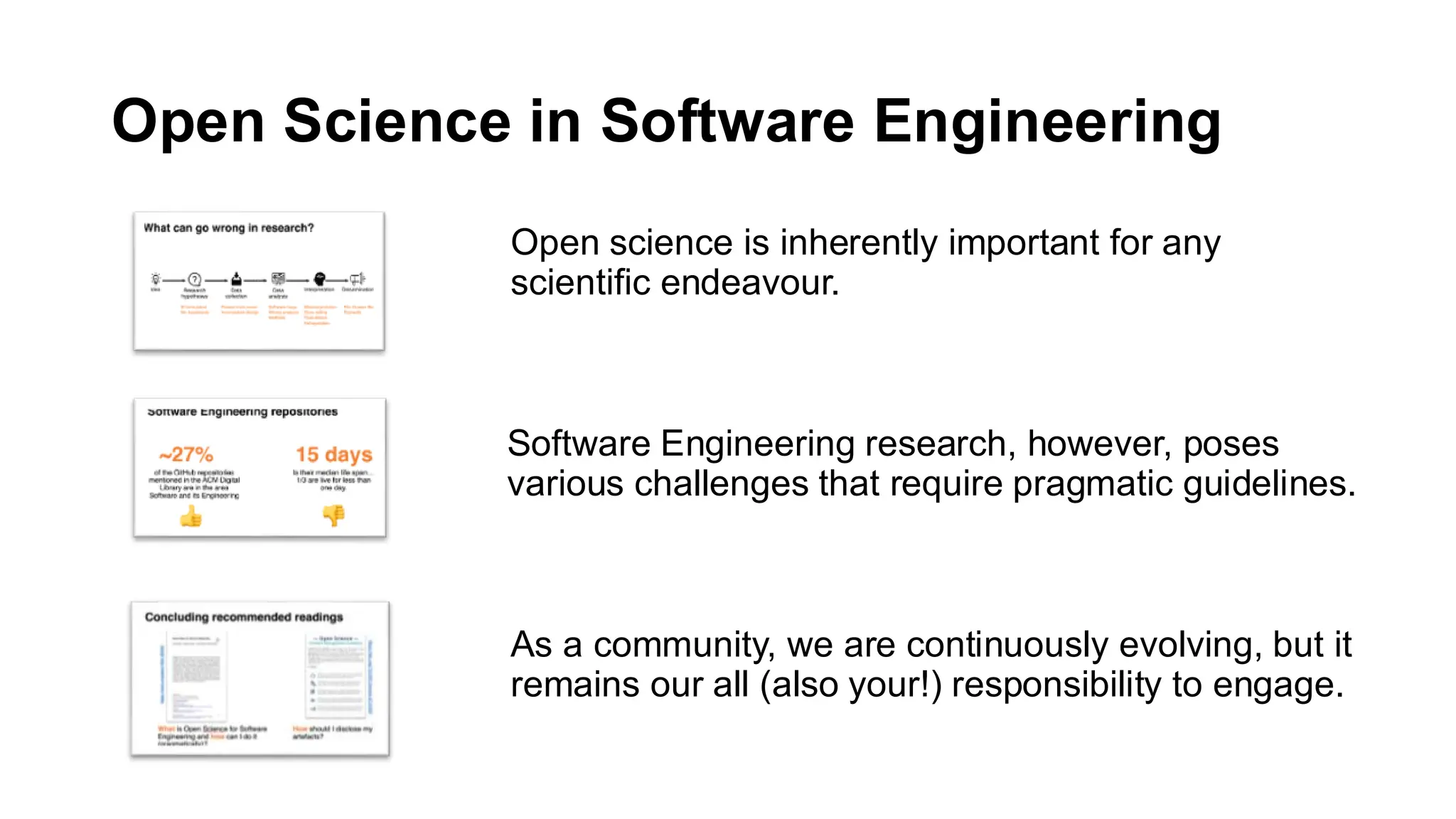The document discusses the importance and challenges of open science in software engineering, emphasizing the need for transparency, replicability, and accessibility of research data and publications. It outlines key principles, pragmatic advice, and community initiatives aimed at improving the sharing of research artifacts. The need for clear guidelines and tools to foster open science practices among researchers is highlighted, alongside the recognition that significant barriers still exist in adopting these practices.
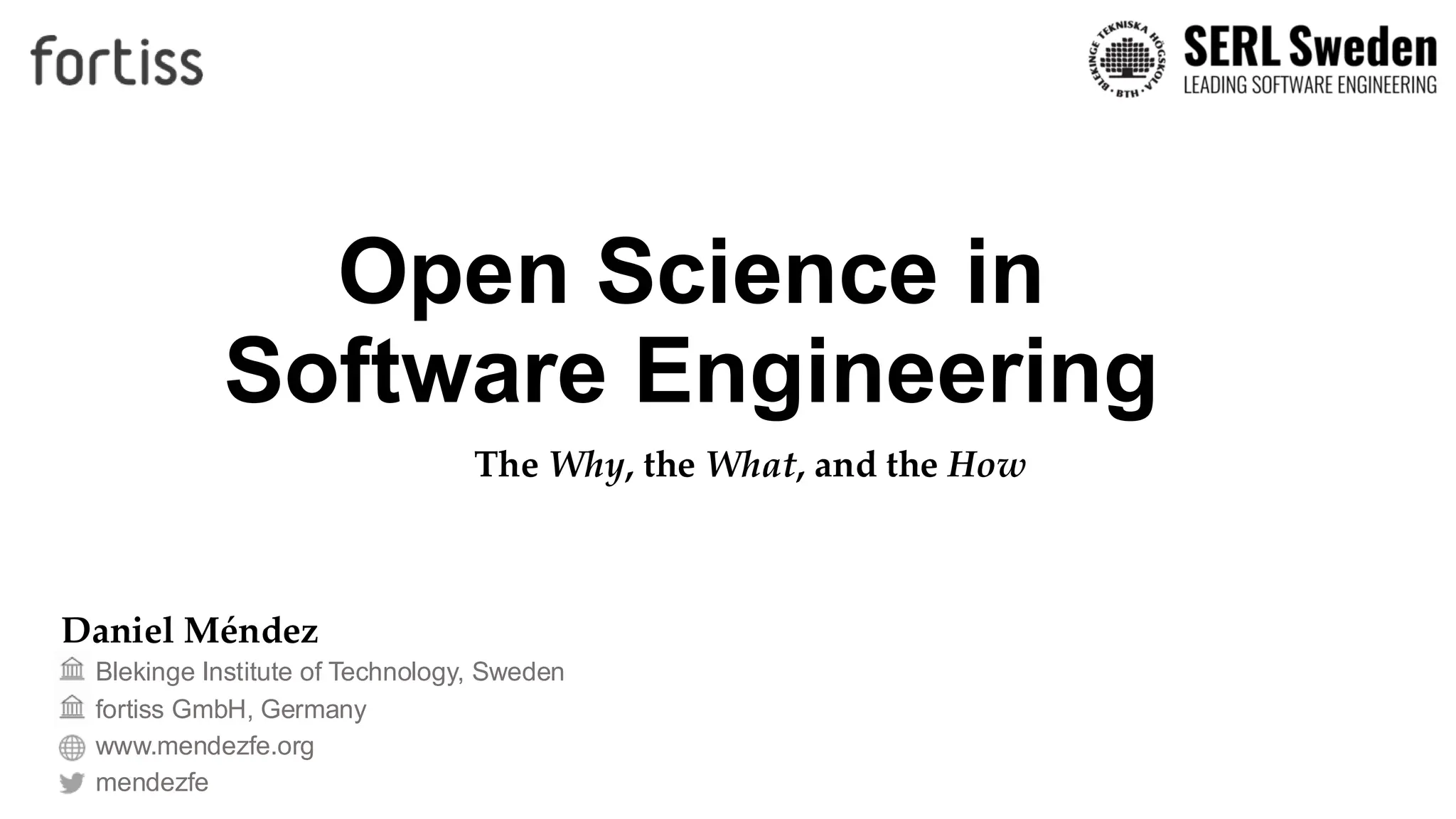
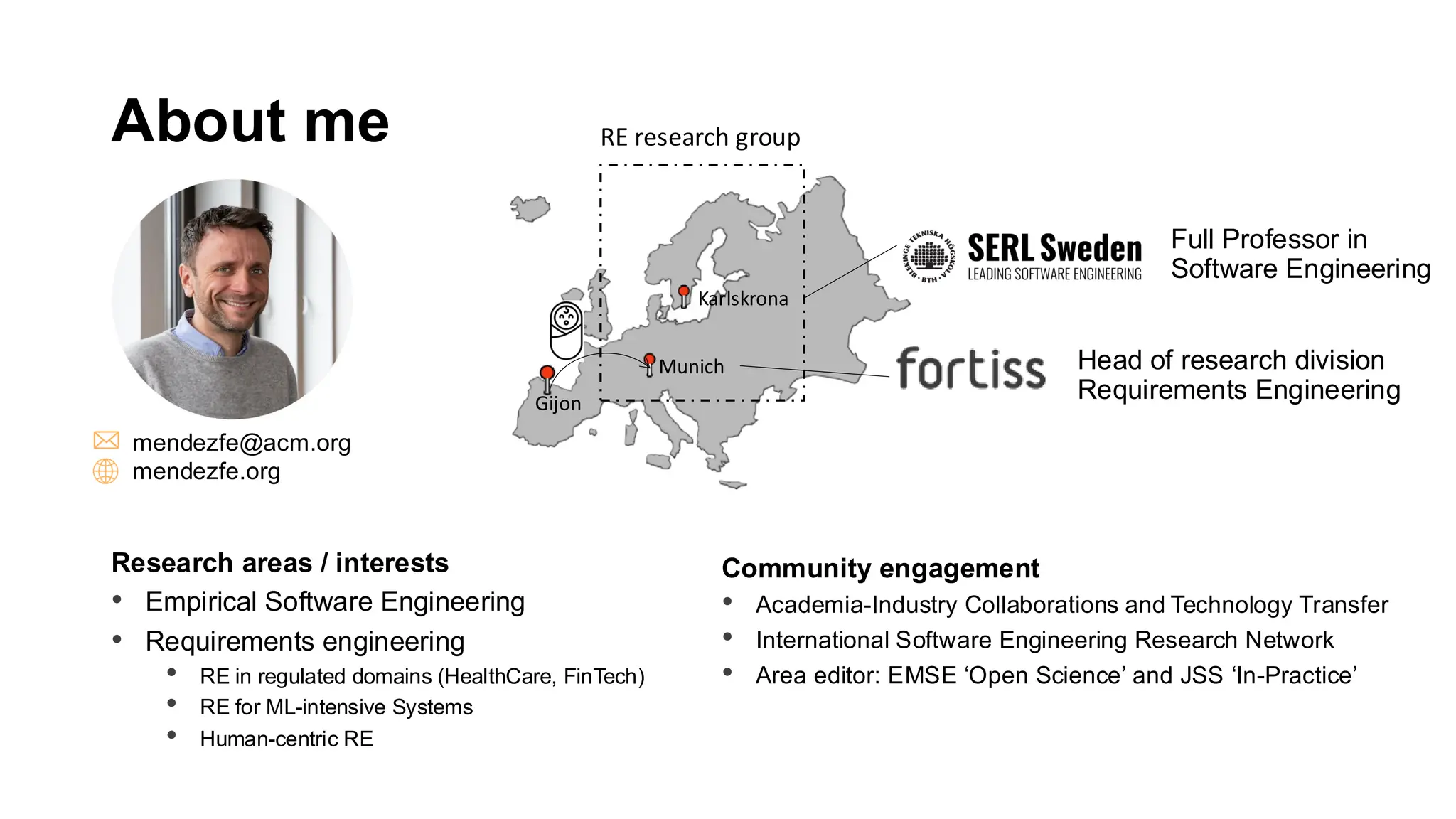
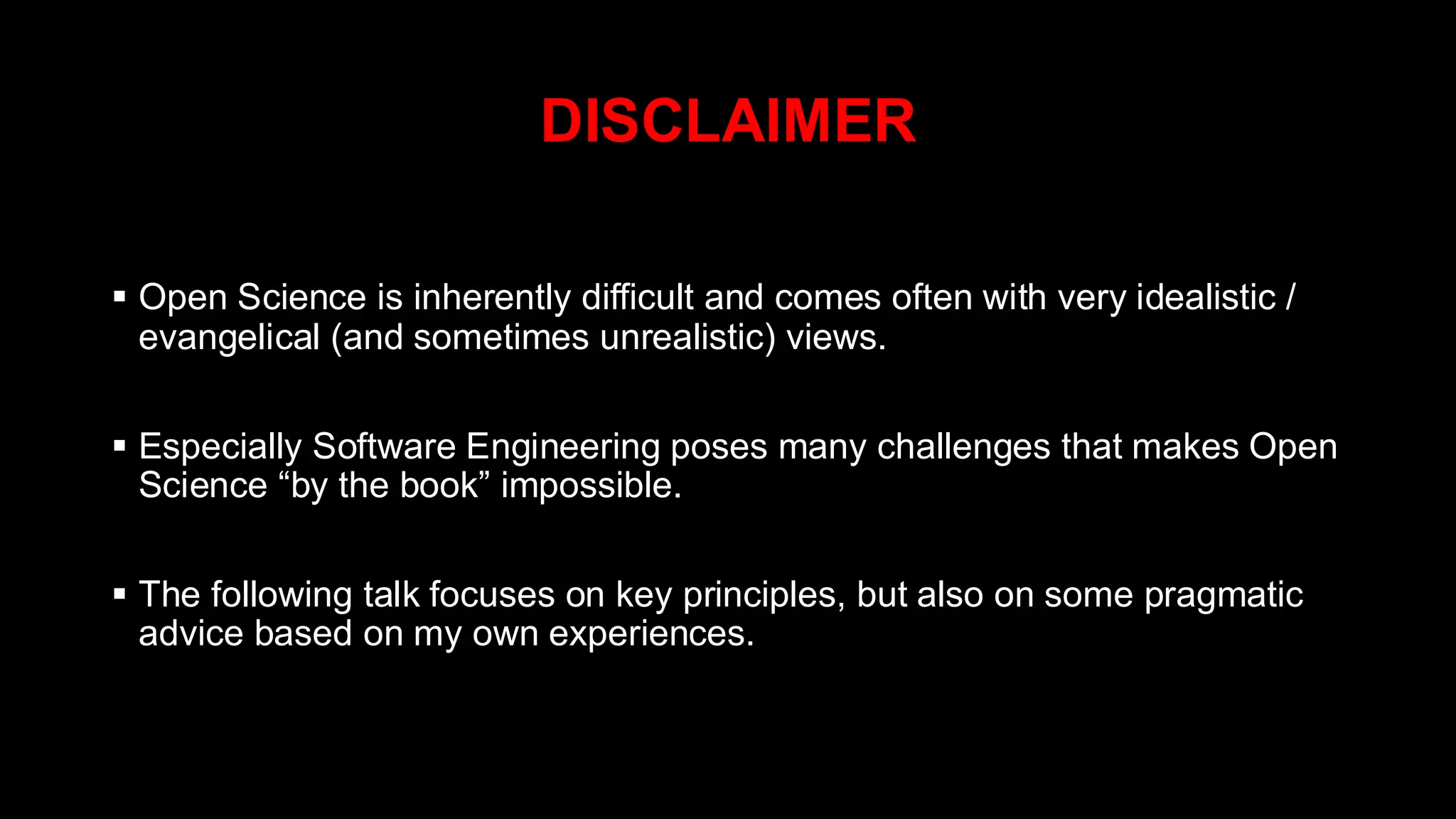
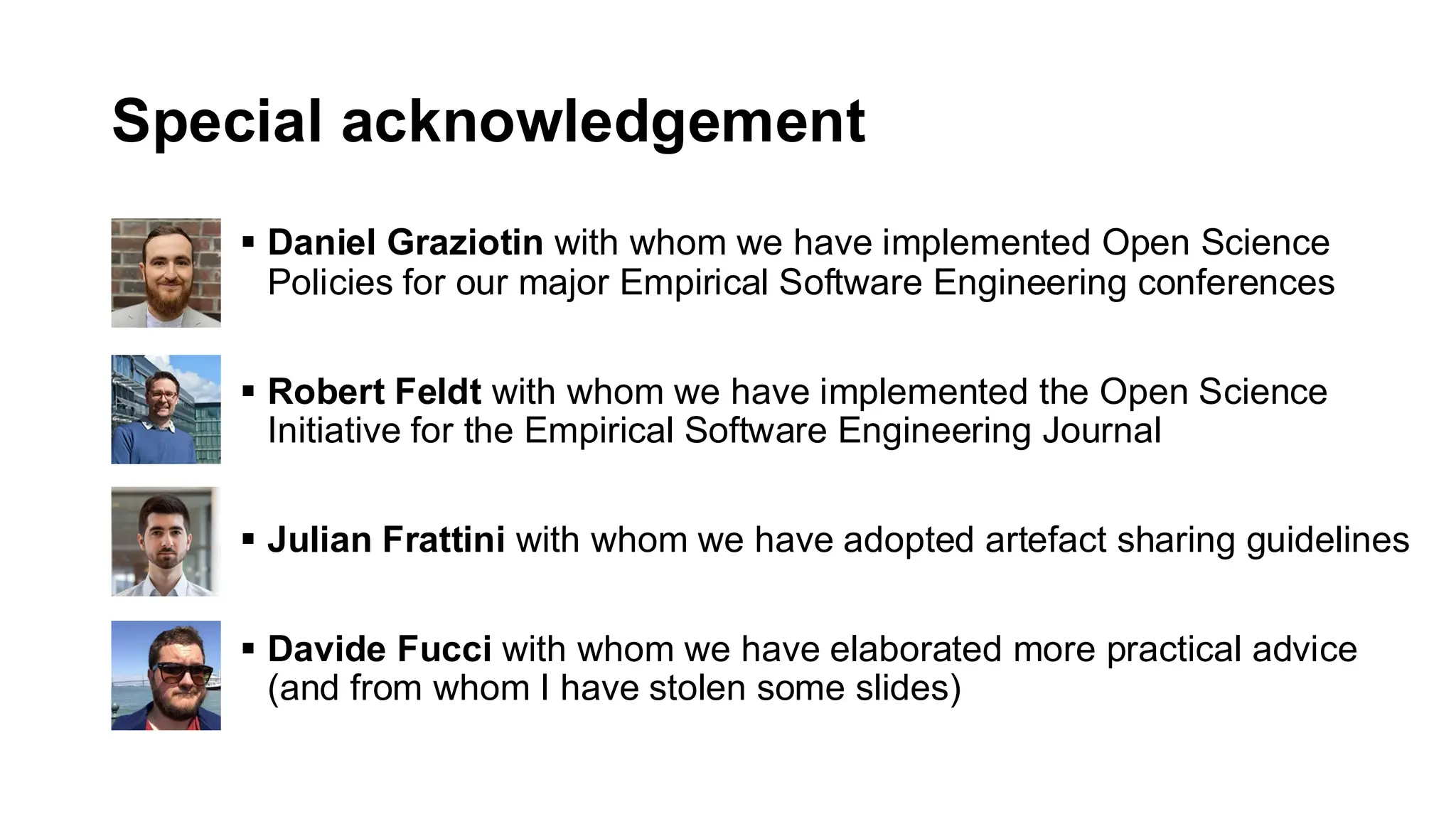
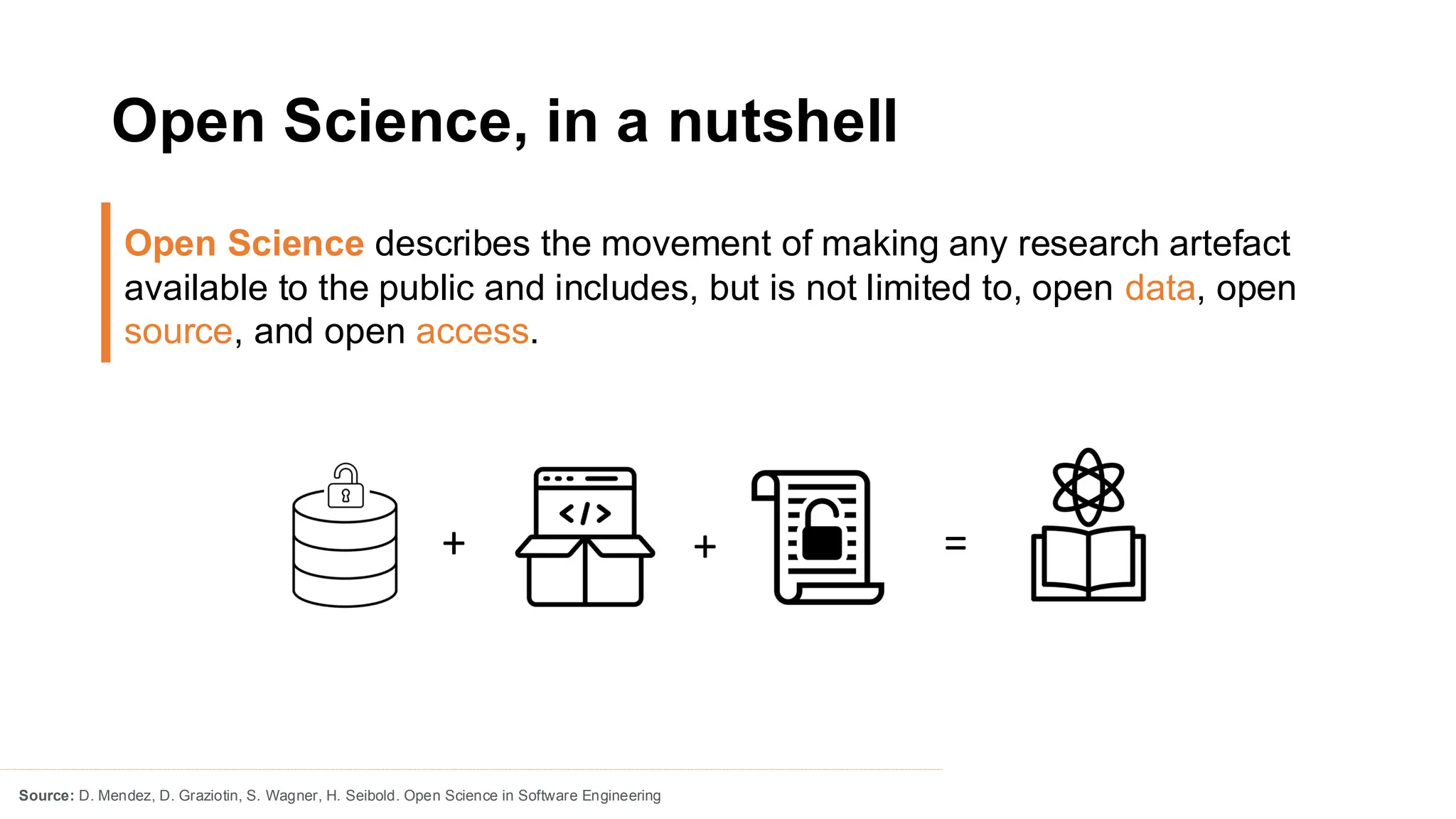
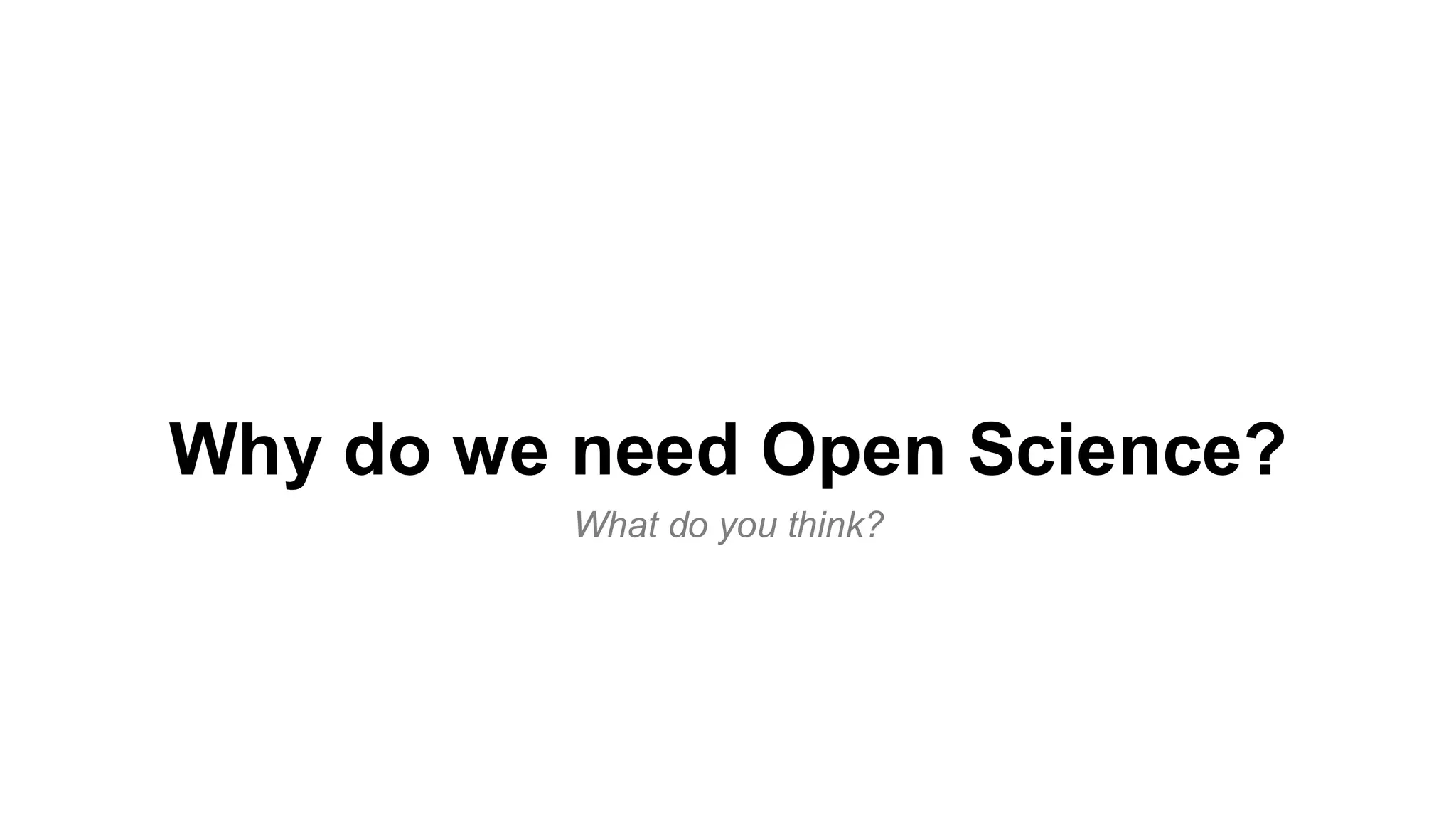
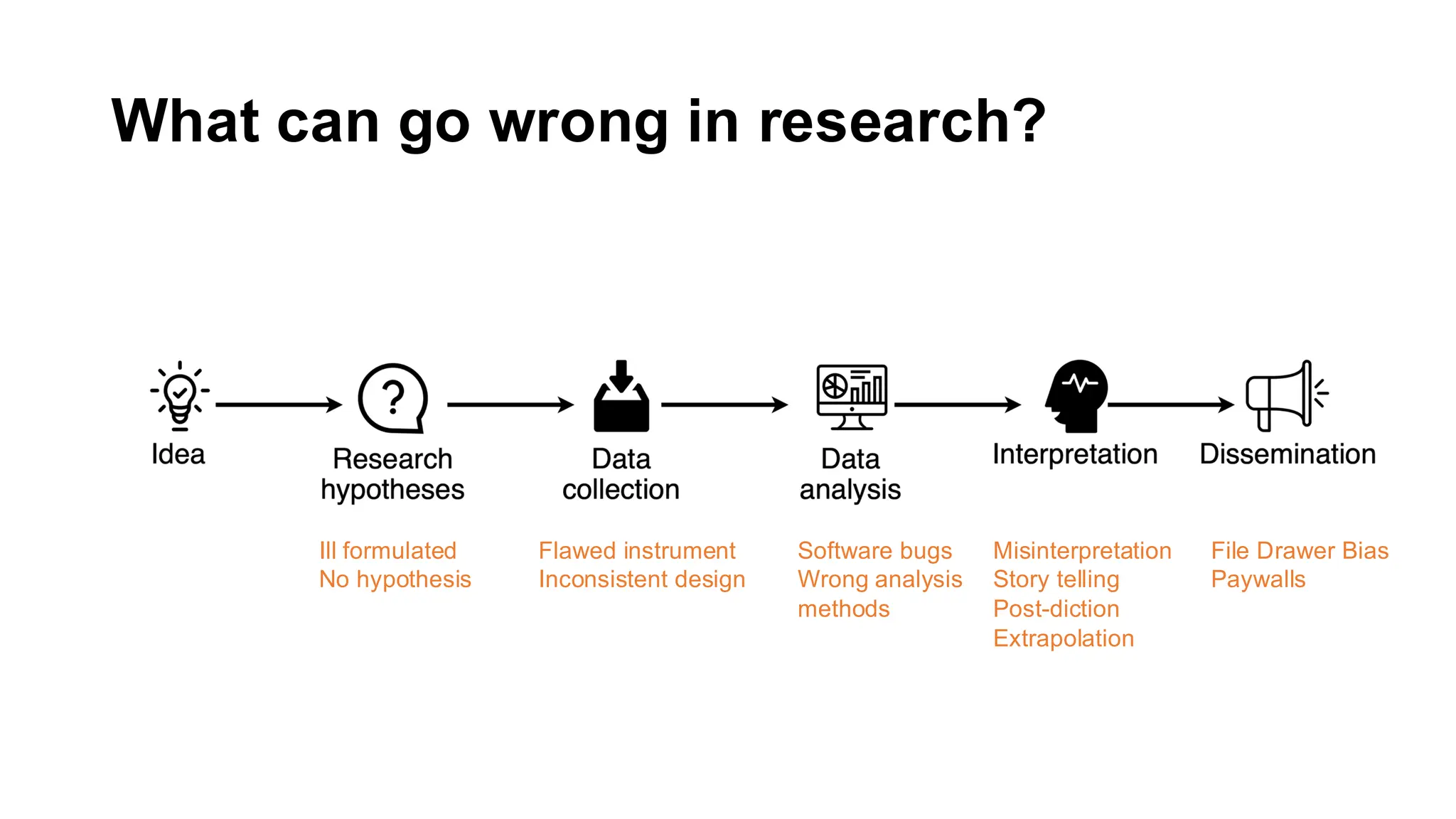

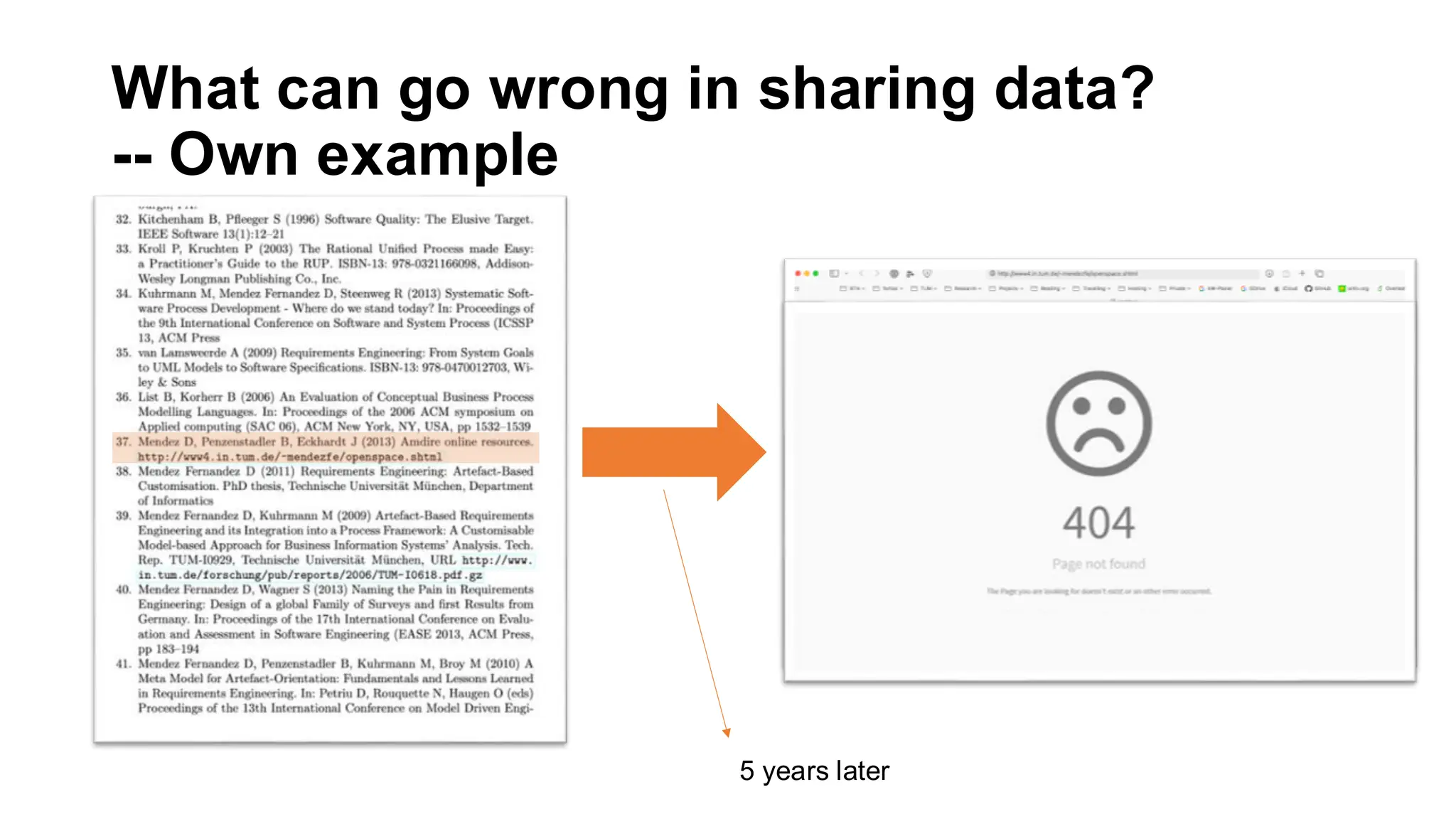
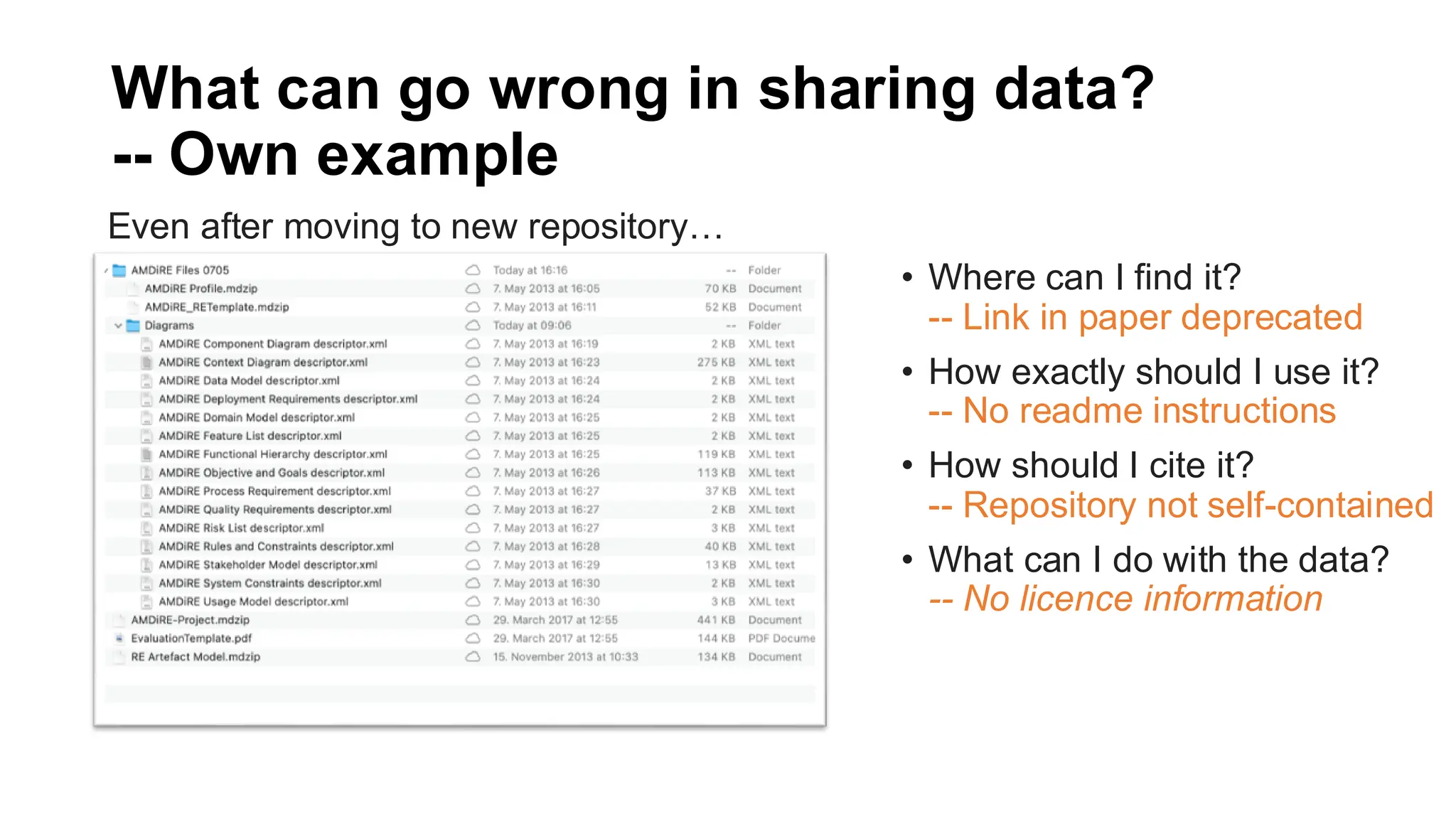
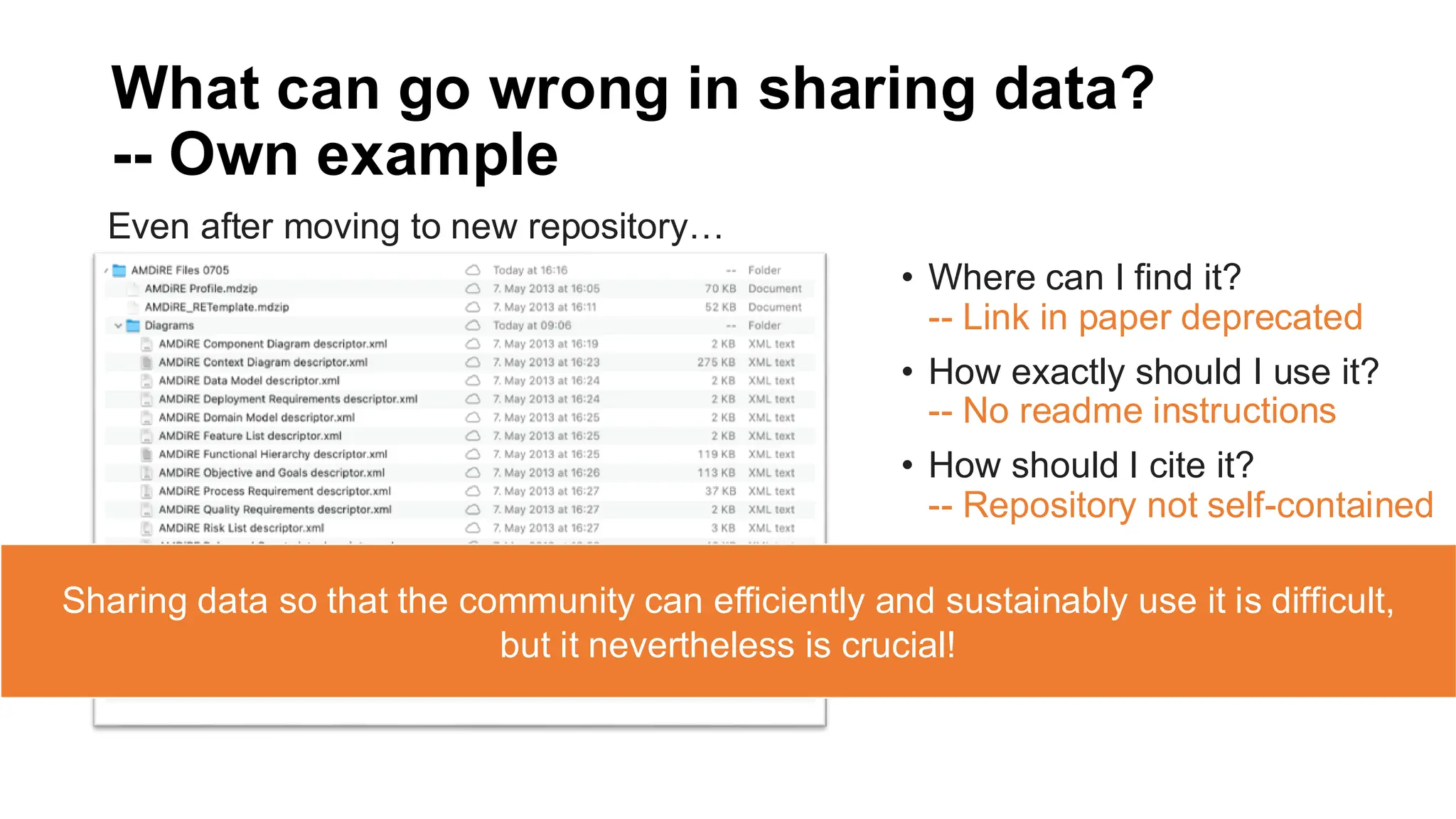
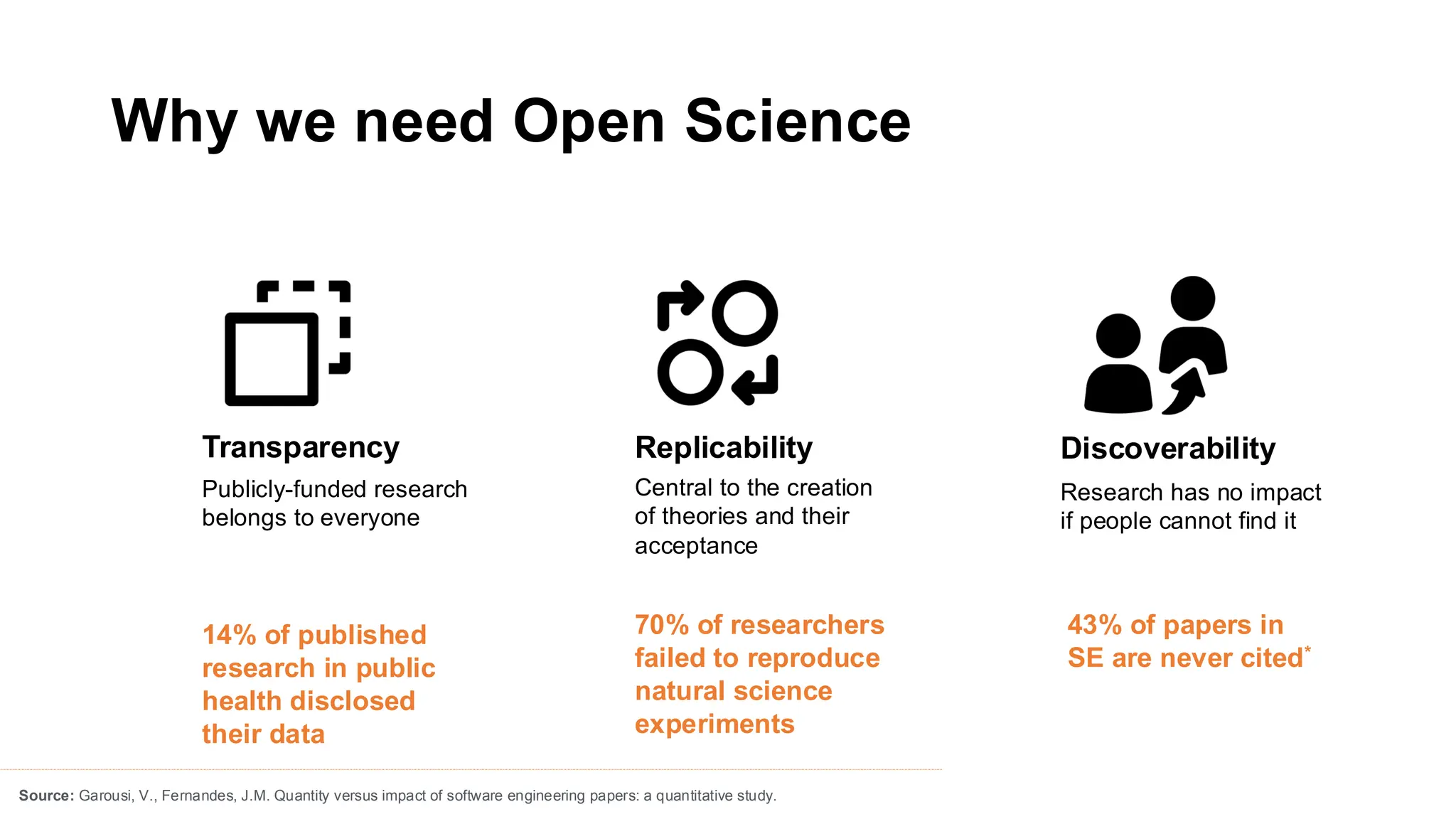
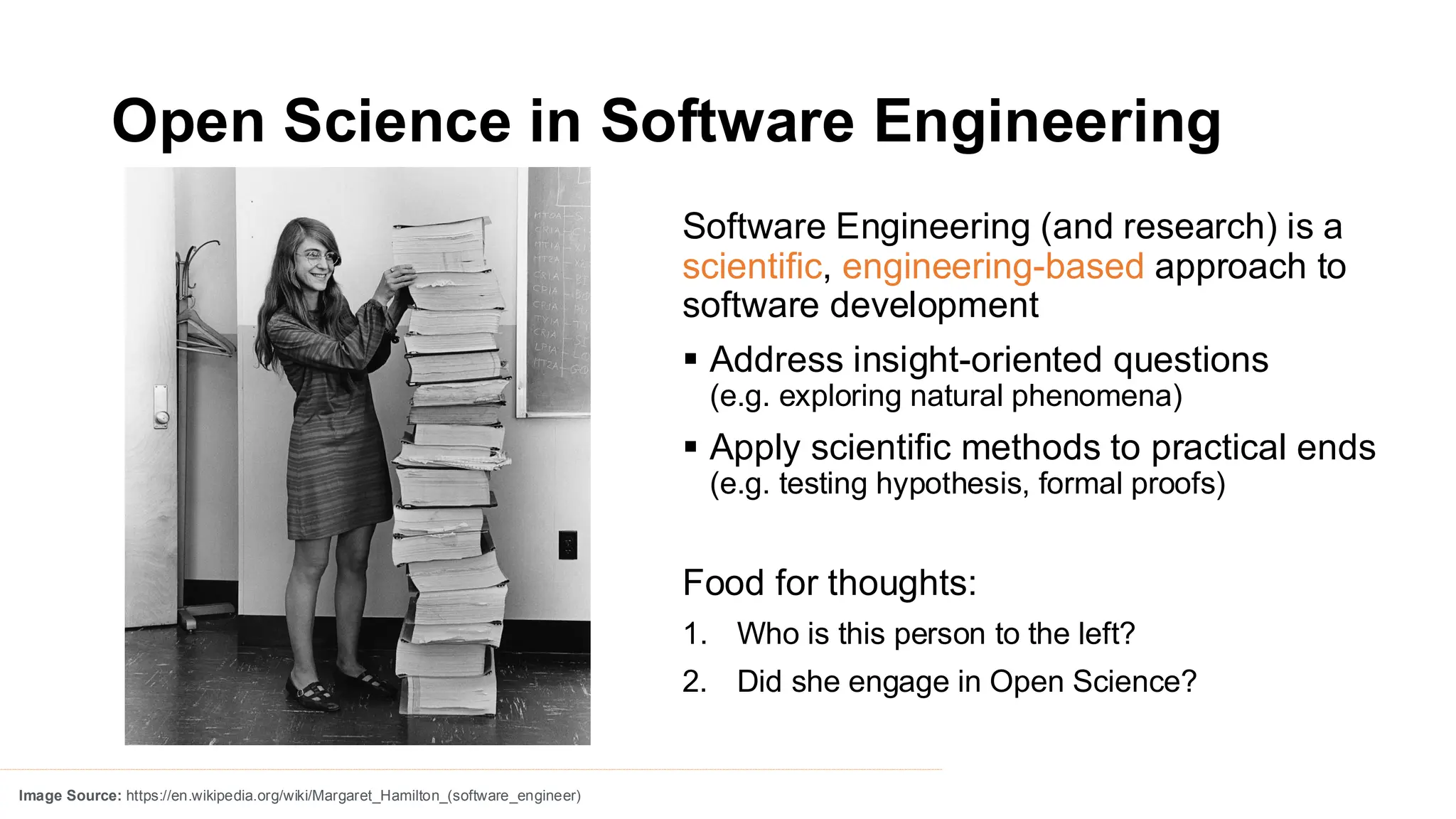
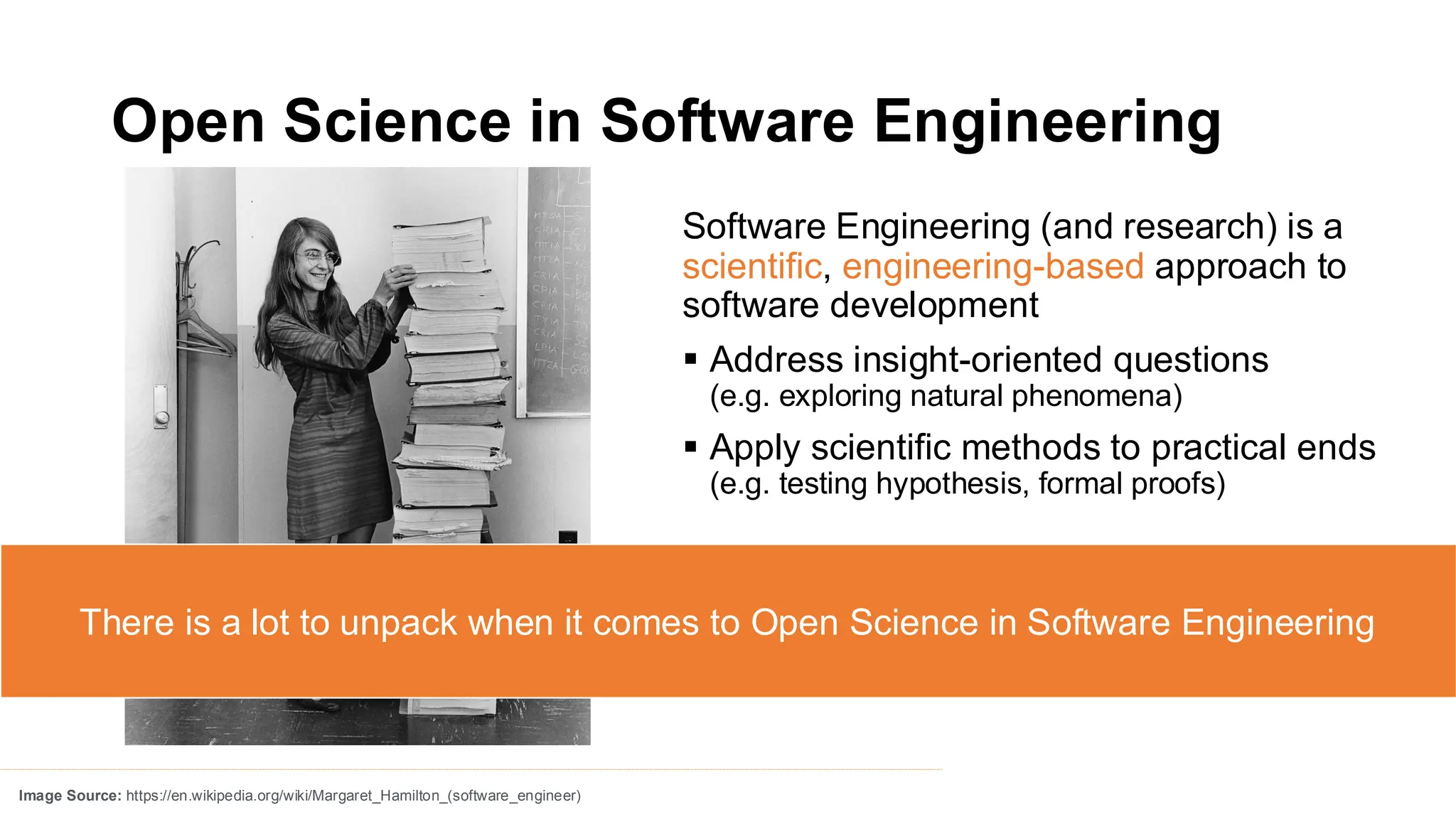


![As a reviewer of manuscripts
As a reviewer, I am responsible for peer-reviewing submitted articles and
papers to journals, conferences, and workshops. Peer-review is key activity
to preserve the quality and integrity of scientific publications [1].
Typical guiding questions:
▪ Is the paper “well” written
(encompasses various aspects)
▪ Are the research methods appropriate?
▪ Are the results credible and valid?
Source [1]: N. Ernst, J. Carver, D. Mendez, M. Torchiano. Understanding Peer Review of Software Engineering Papers (https://arxiv.org/abs/1904.06499)
Source [2]: L. Prechelt, D. Graziotin, D. Mendez. A Community’s Perspective on the Status and Future of Peer Review in Software Engineering (https://arxiv.org/abs/1706.07196)
Checking the credibility and validity
requires access to the data
Community survey [2]](https://image.slidesharecdn.com/2024-10-17openscienceinsoftwareengineering-241125054359-f4ea30b6/75/Open-Science-in-Software-Engineering-pdf-17-2048.jpg)
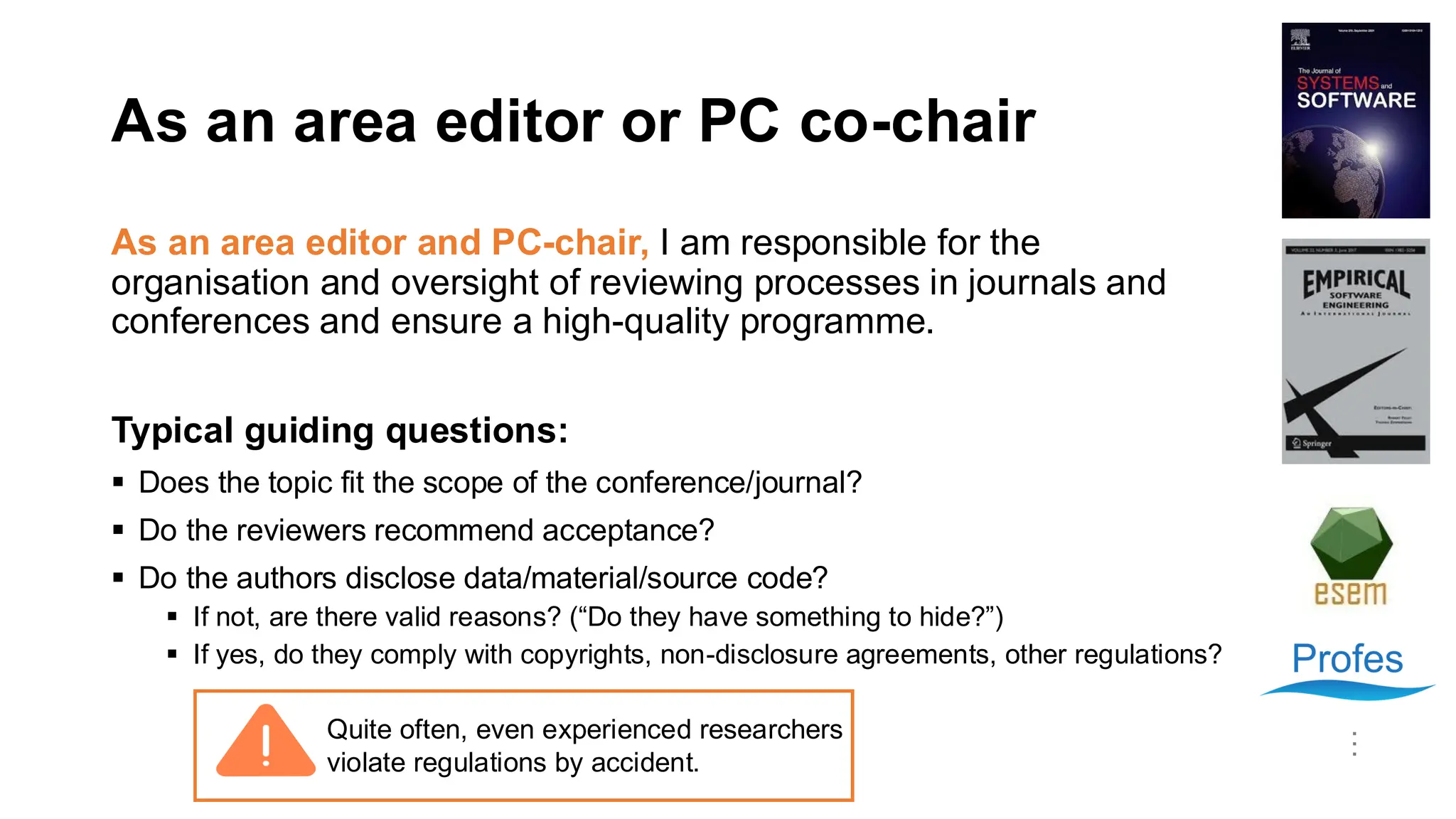
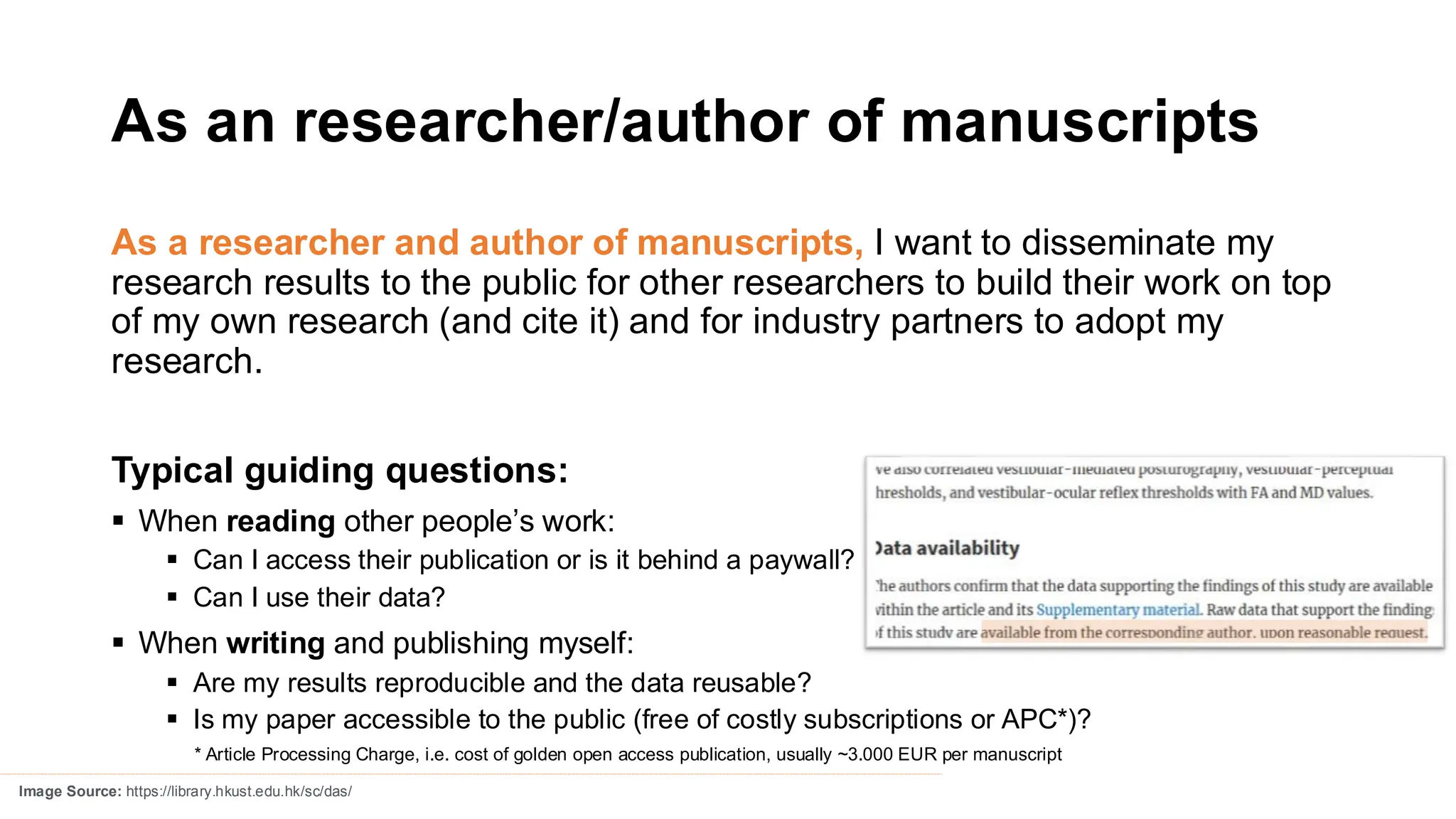
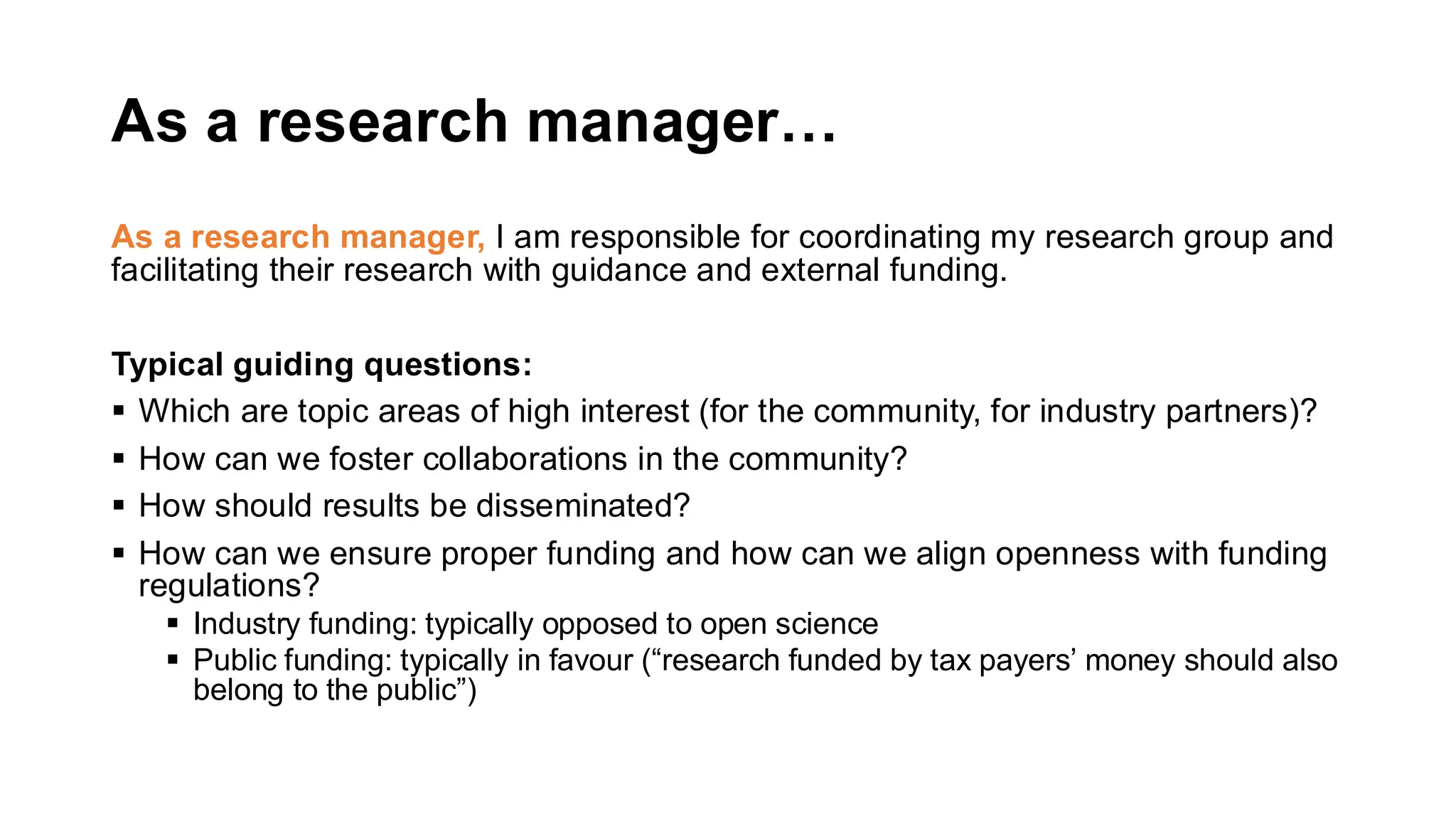
![What do funding agencies say
about Open Science?
“[…] the ERC expects its grantees to publish in peer-reviewed articles and
monographs. The ERC considers that providing free online access to these
materials is the most effective way of ensuring that the fruits of the research
it funds can be accessed, read, and used as the basis for further research.”
▪ Open Access: ” Beneficiaries must ensure open, free-of-charge access to
the end-user to peer-reviewed scientific publications relating to their
results.”
▪ Open Data: “The data management plan must address the FAIR
principles”](https://image.slidesharecdn.com/2024-10-17openscienceinsoftwareengineering-241125054359-f4ea30b6/75/Open-Science-in-Software-Engineering-pdf-21-2048.jpg)
![What do funding agencies say
about Open Science?
“[…] The results of projects financed by DFG funding should be made available to
the public. […]”
▪ Open Access: ” The recipients of DFG grants are hereby requested to publish
their project results for the purpose of scholarly communication in open access
[…] without delay.
▪ Open Data: “The long-term archiving and accessibility of research data
contributes to the traceability and quality of scientific work and enables
researchers to carry on work begun by others. [Detailed instructions in the
guideline]”](https://image.slidesharecdn.com/2024-10-17openscienceinsoftwareengineering-241125054359-f4ea30b6/75/Open-Science-in-Software-Engineering-pdf-22-2048.jpg)
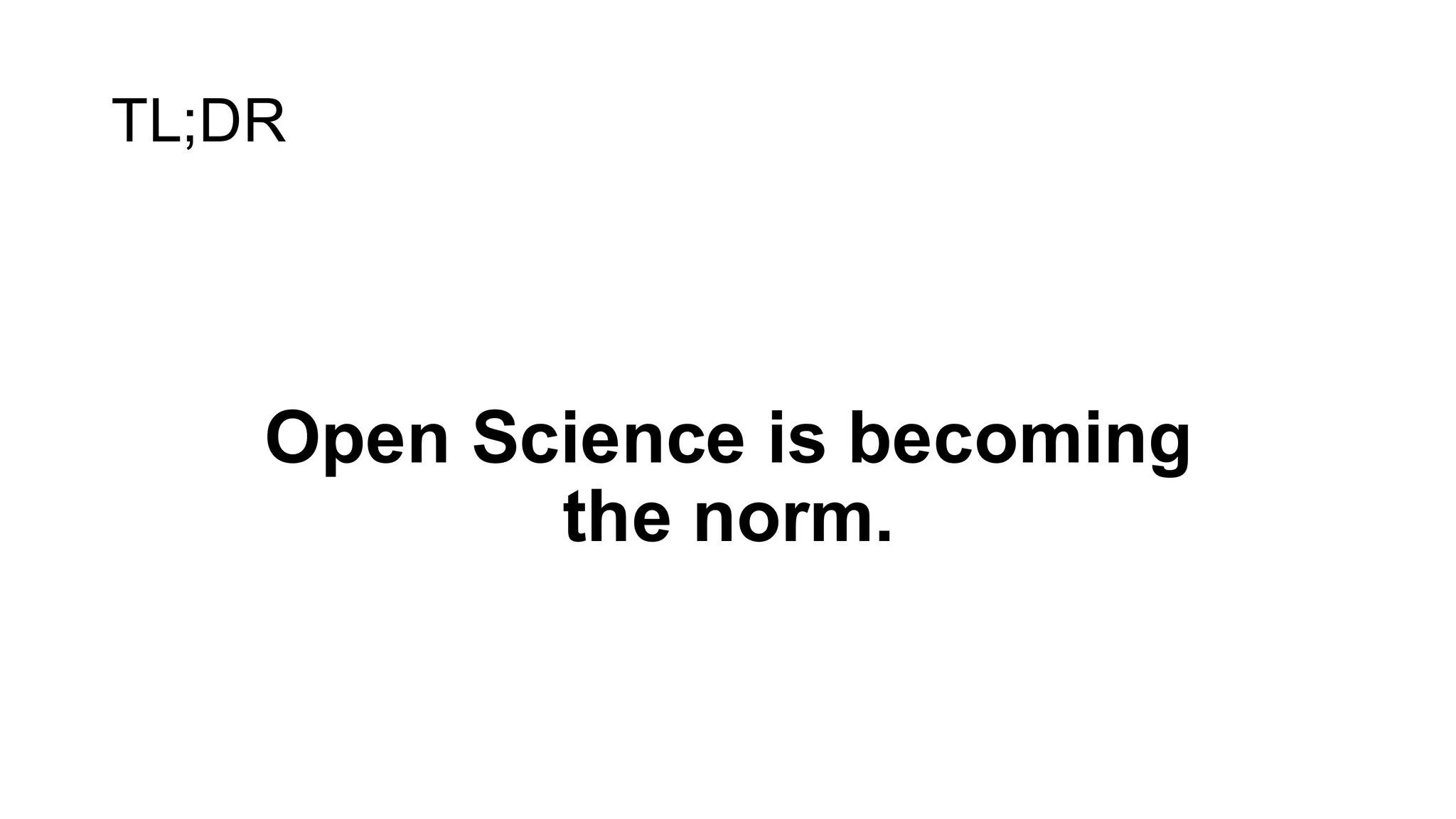
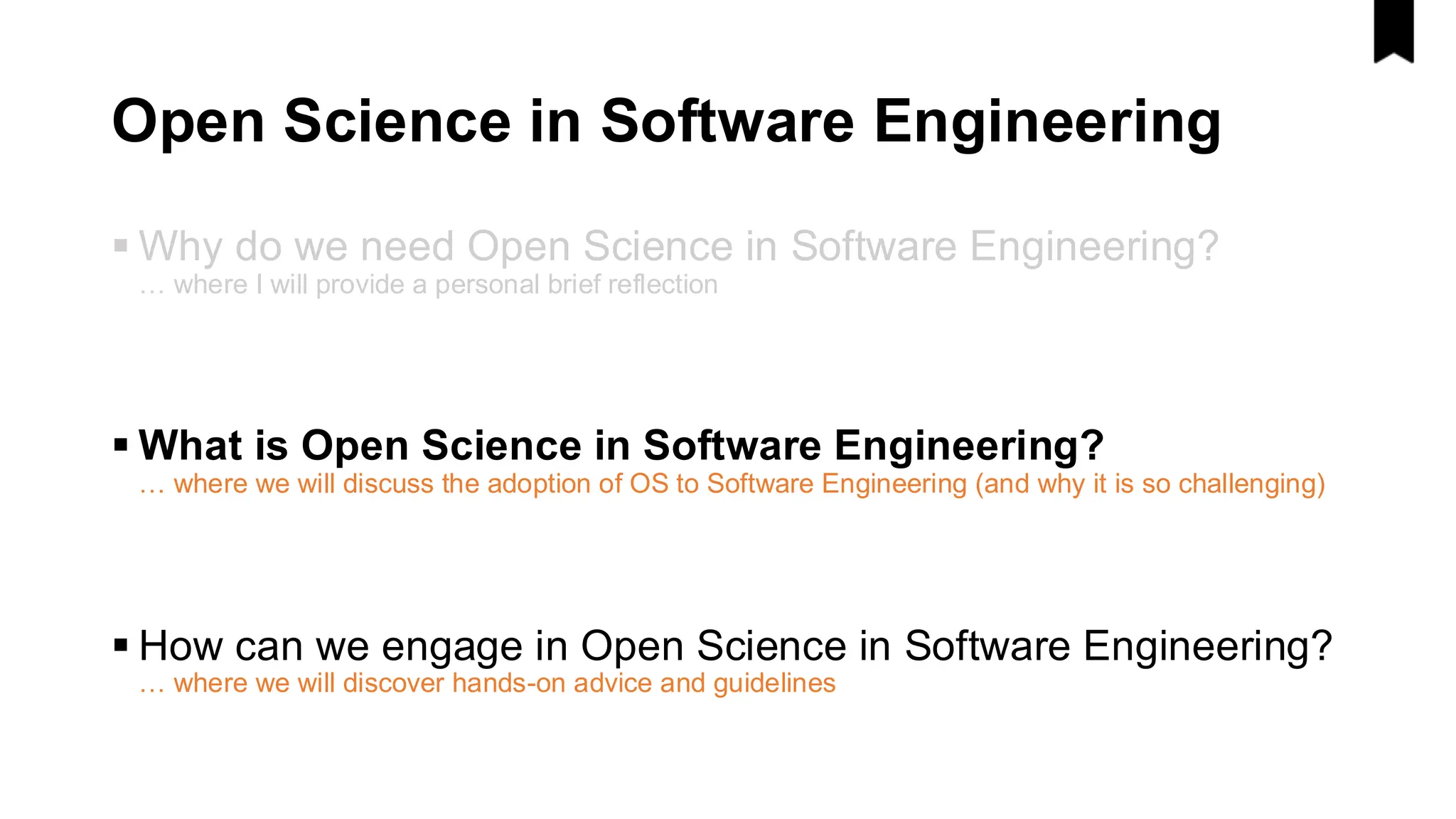
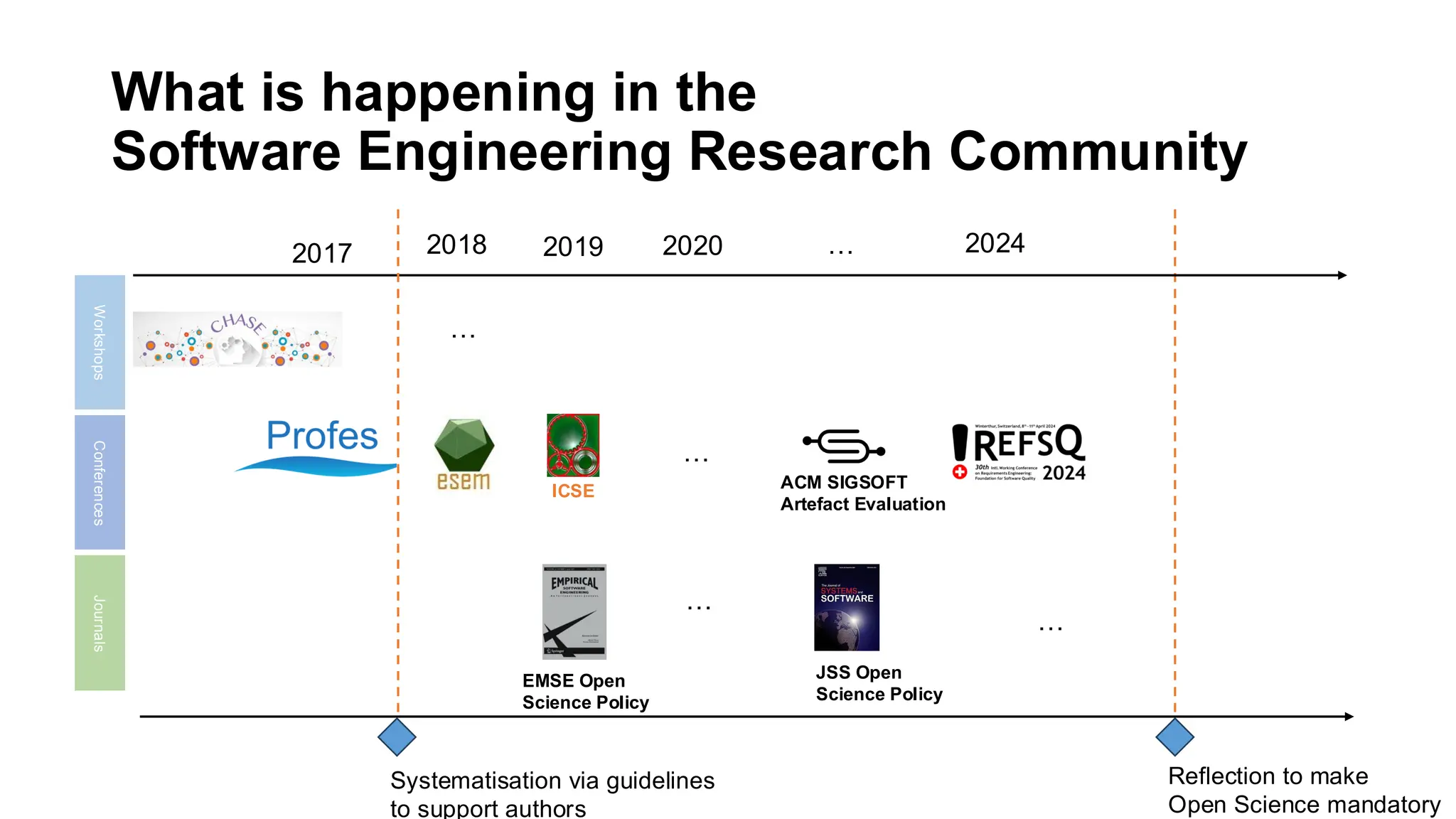
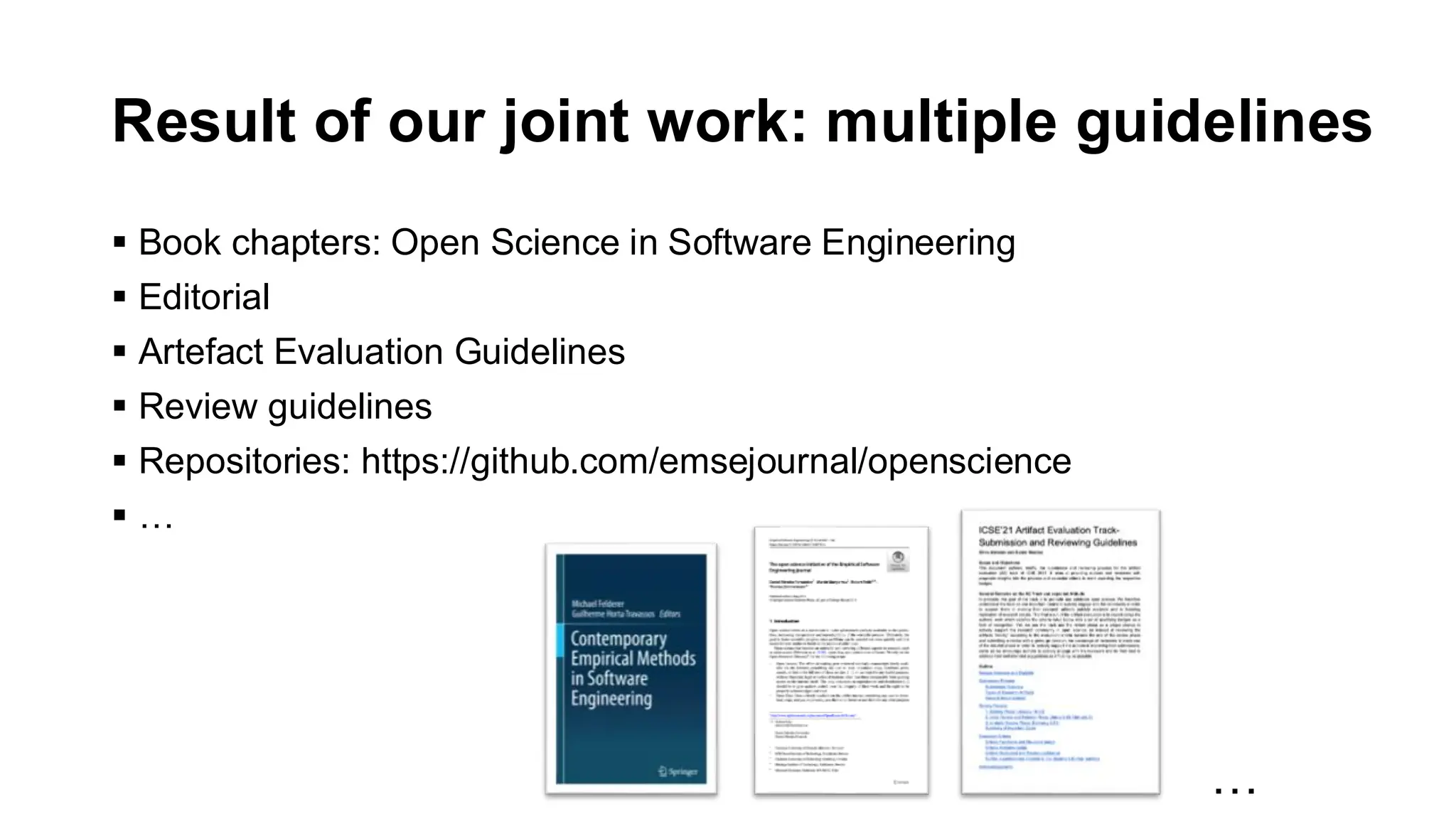
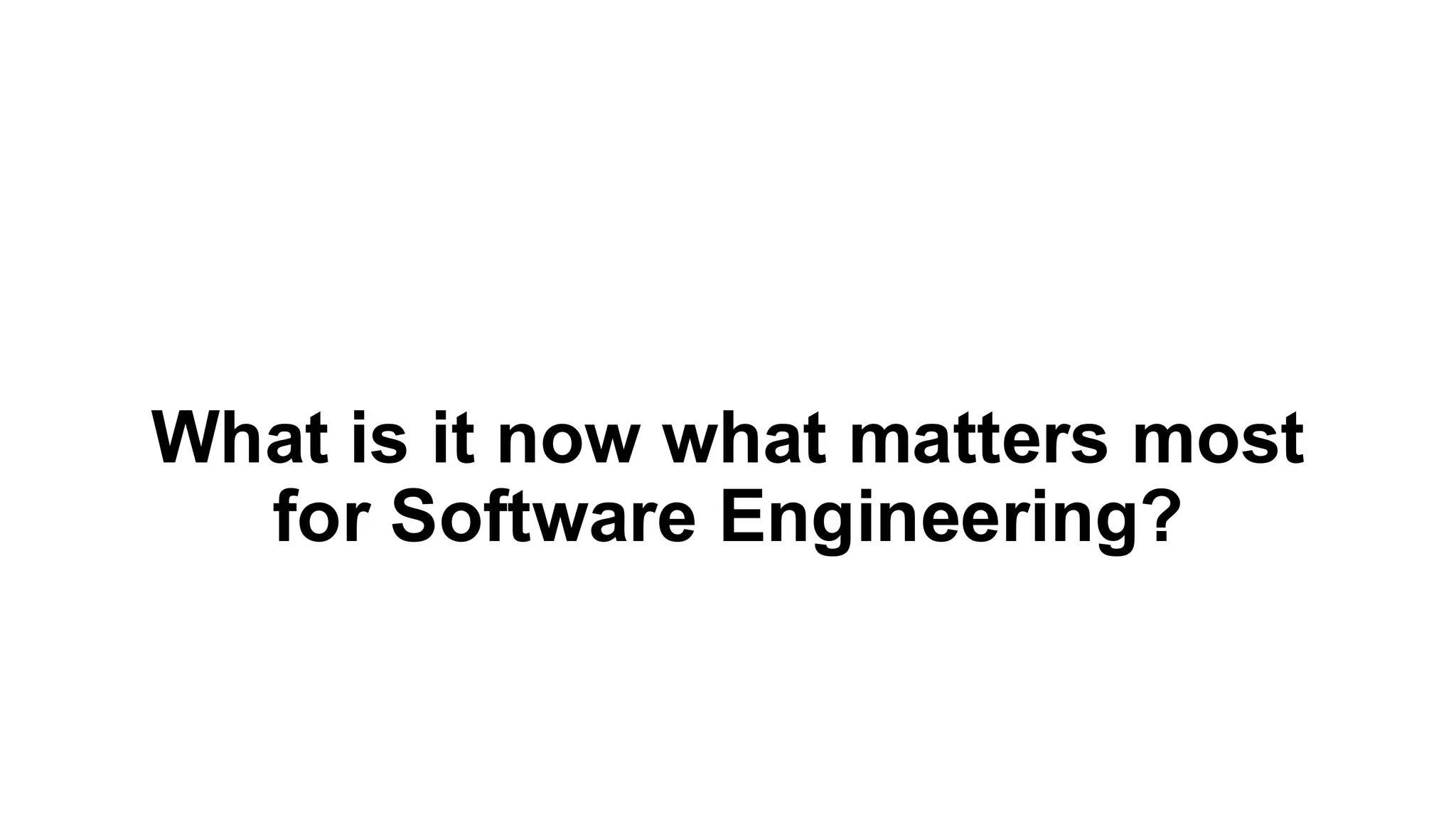
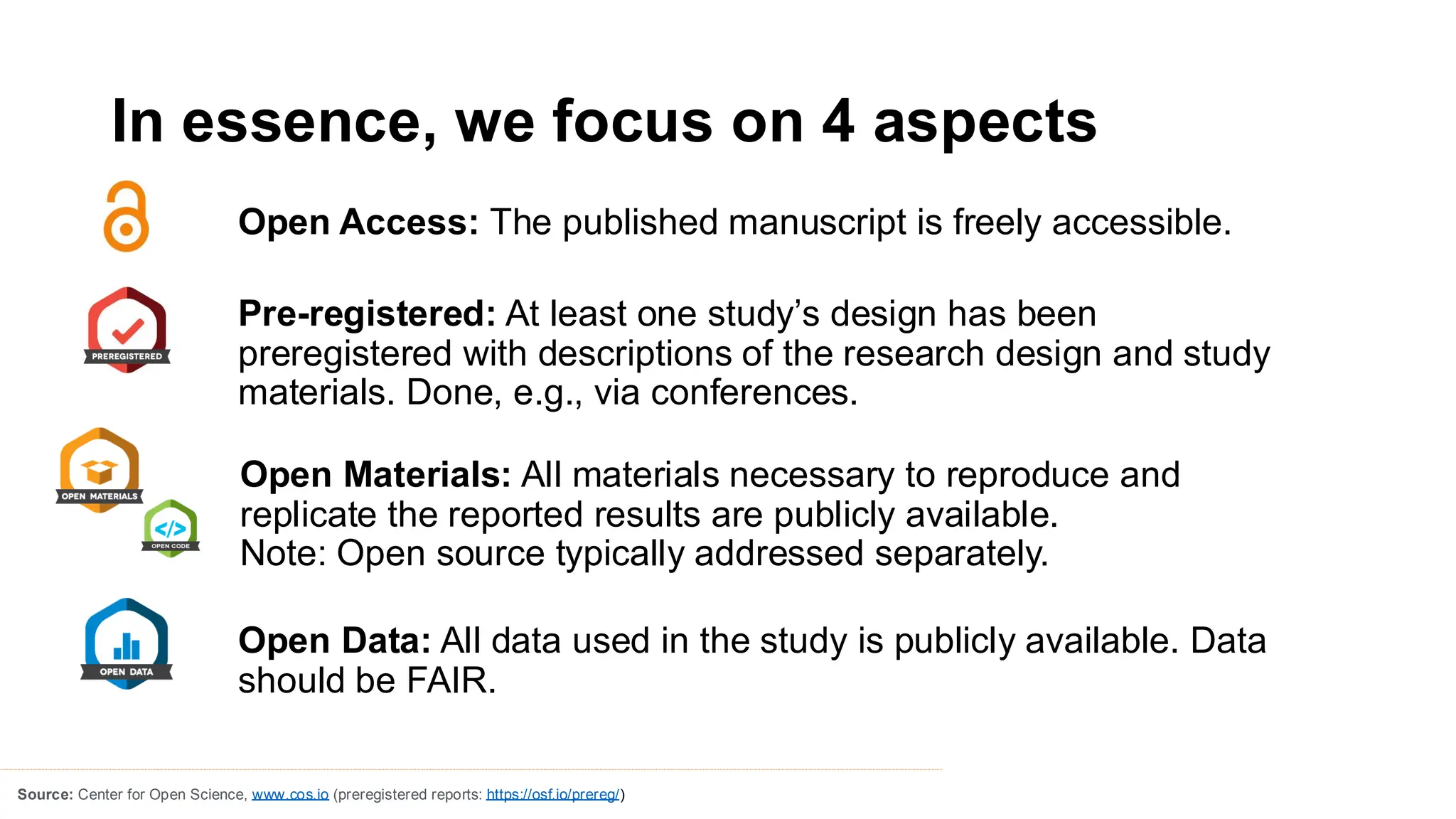
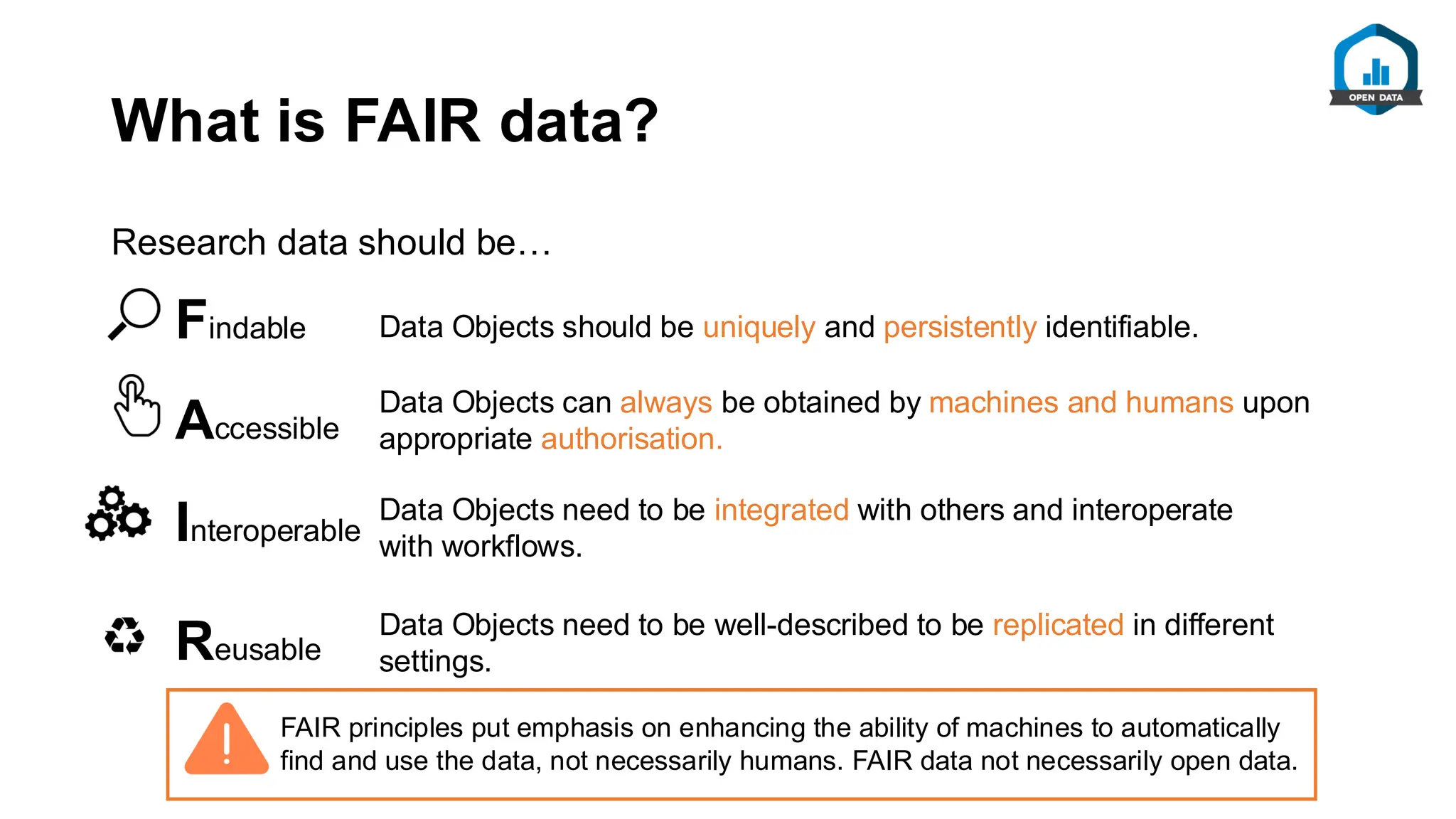
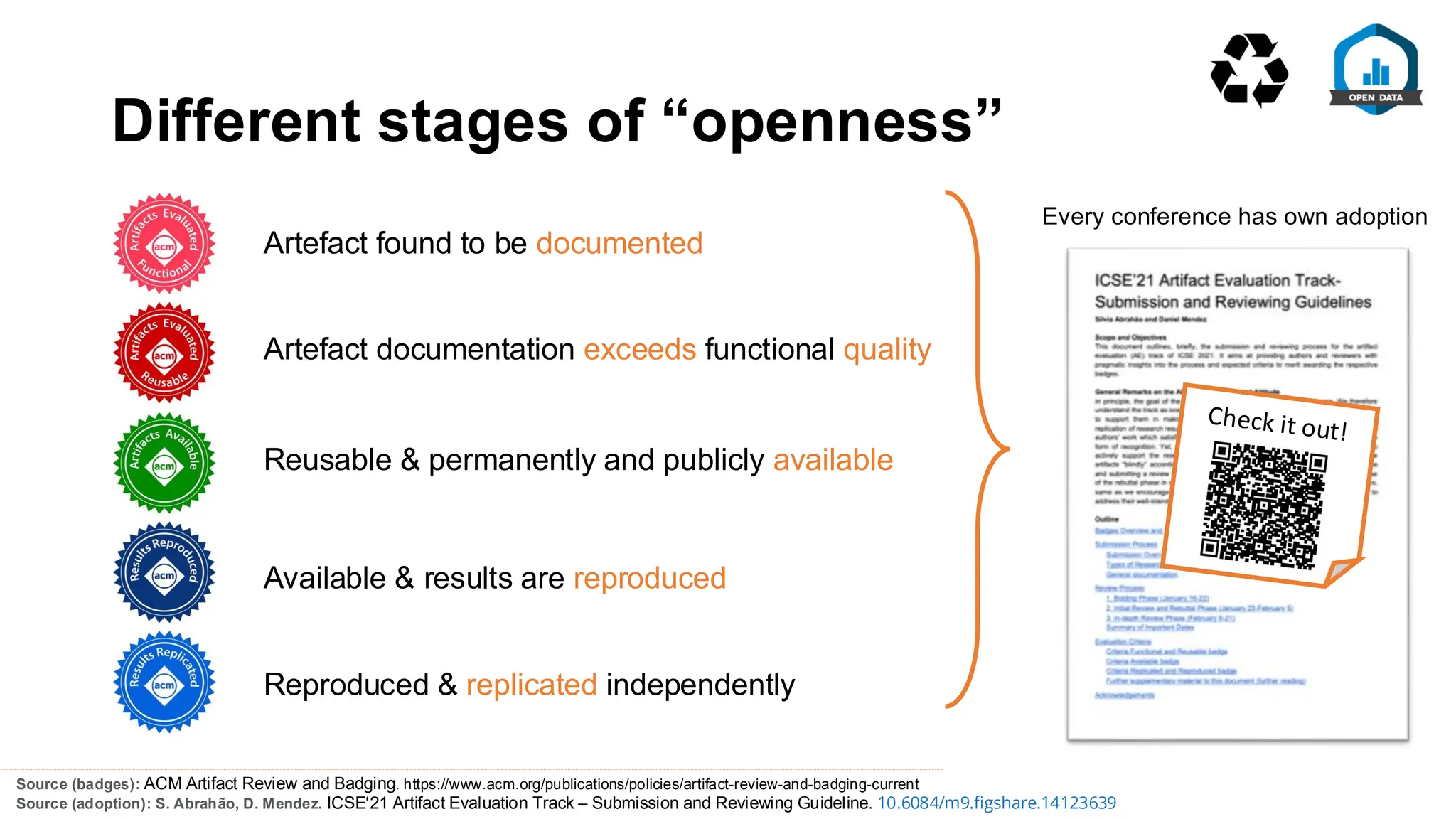
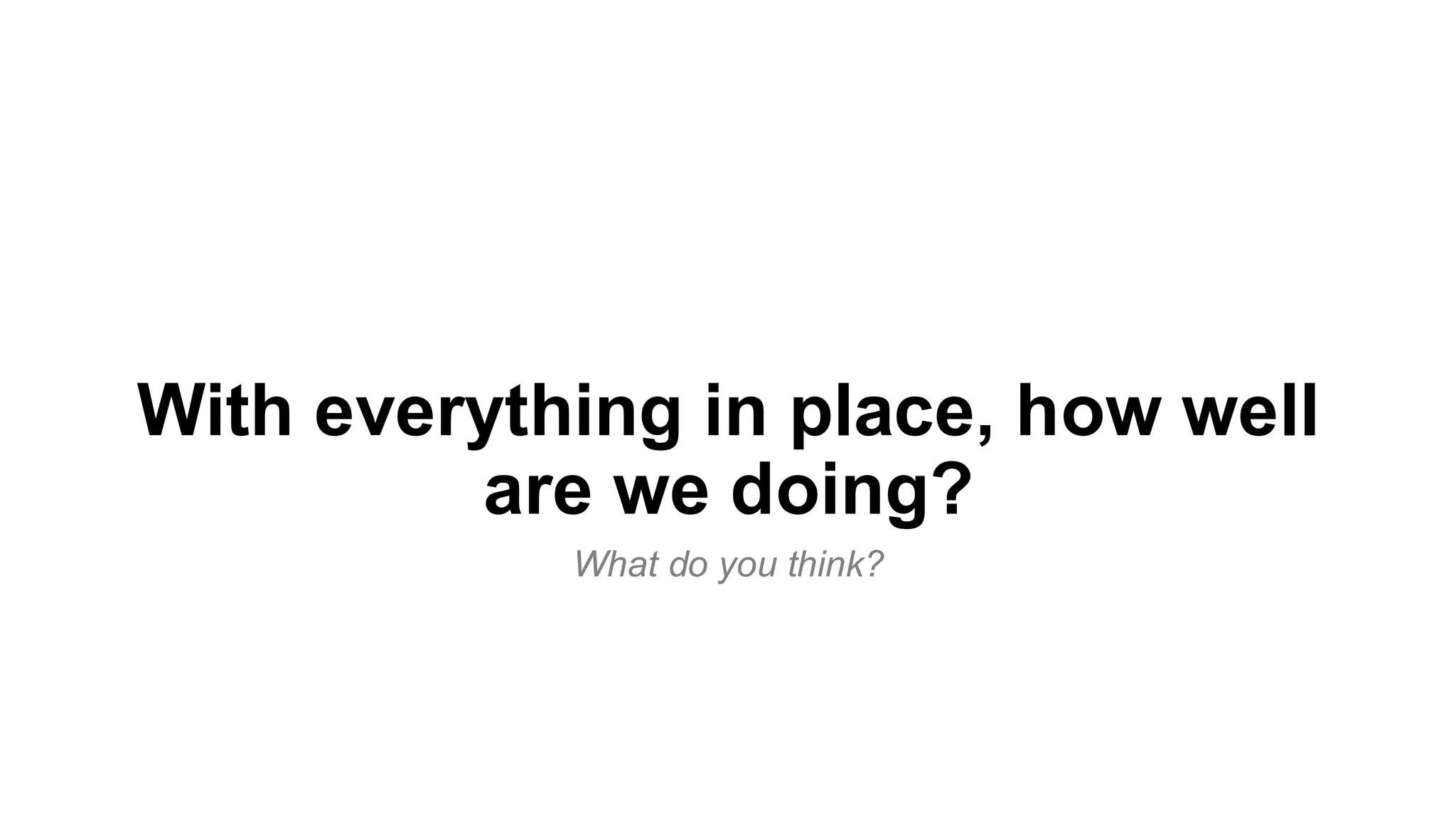
![Software Engineering data sharing
in general
~70%
Of papers to recent conferences
share their data [1].
Source [1]: Own observation from recent conference and track organisations (e.g. REFSQ 2024)
~30%
Of data shared is shared via
personal websites or consumer cloud
storage (e.g. google) [1]. These will
eventually disappear [2].
Source [2]: https://github.com/dgraziotin/disclose-data-dbr-first-then-opendata](https://image.slidesharecdn.com/2024-10-17openscienceinsoftwareengineering-241125054359-f4ea30b6/75/Open-Science-in-Software-Engineering-pdf-32-2048.jpg)
